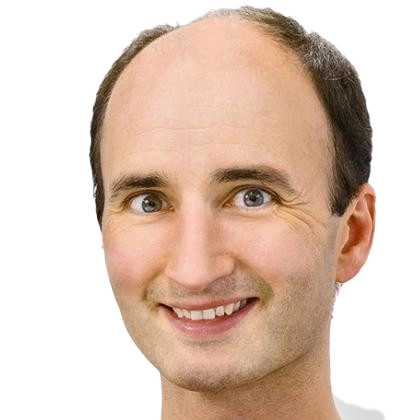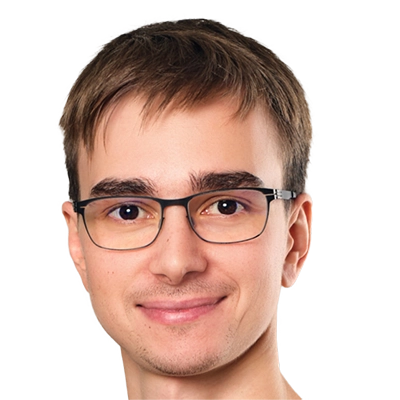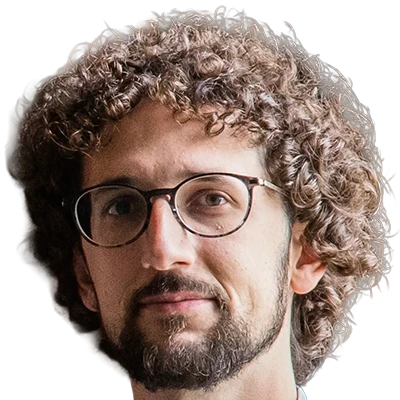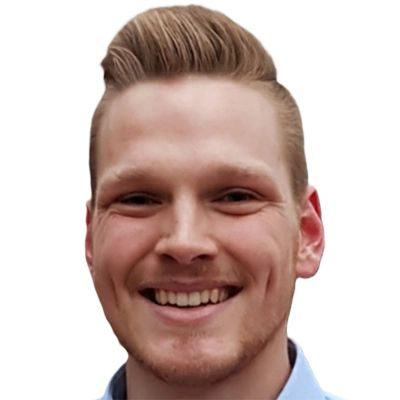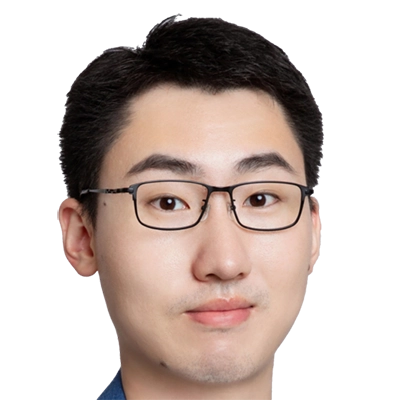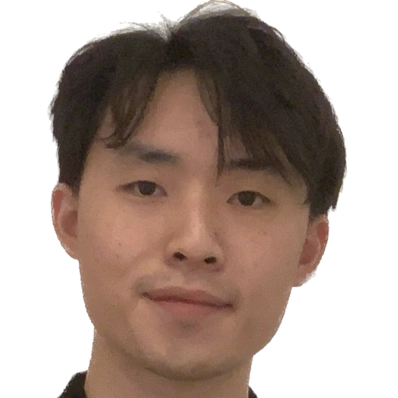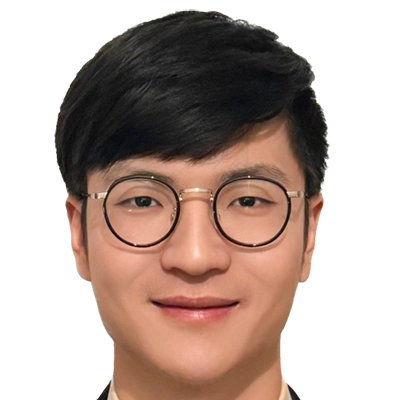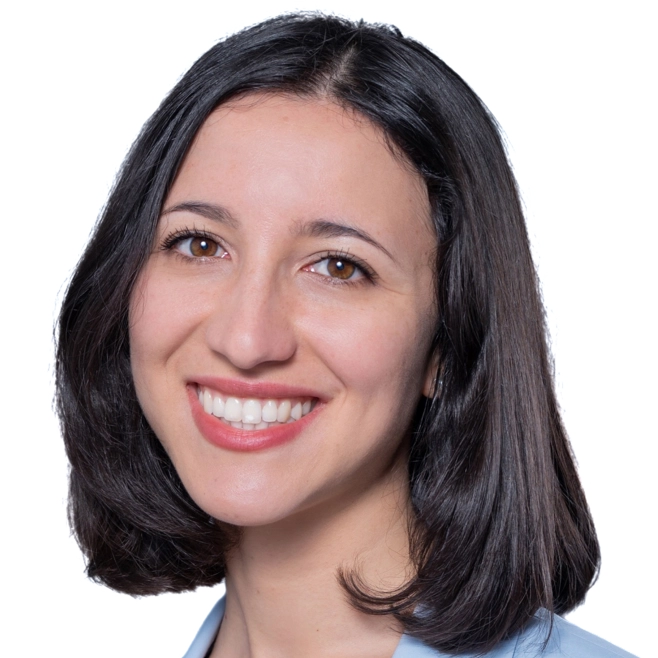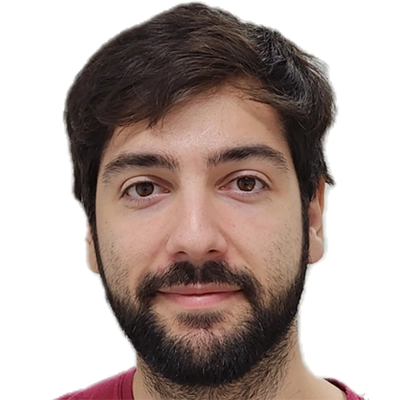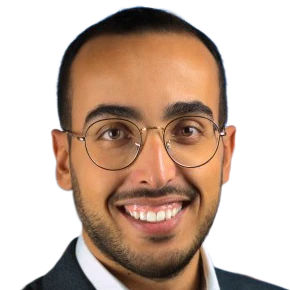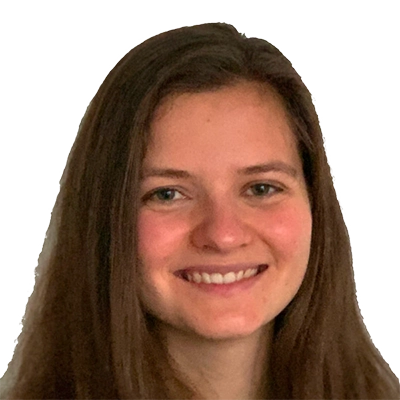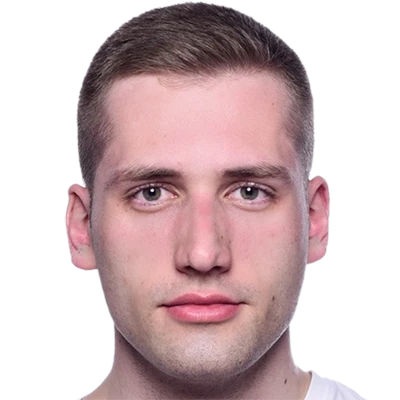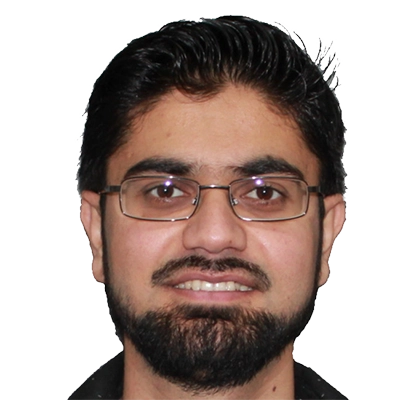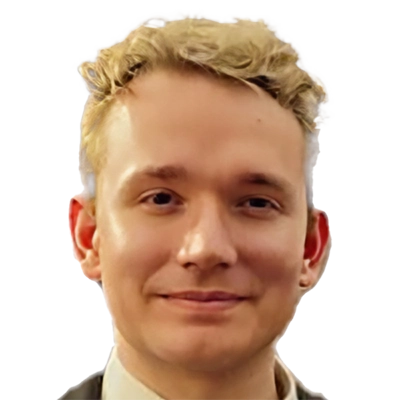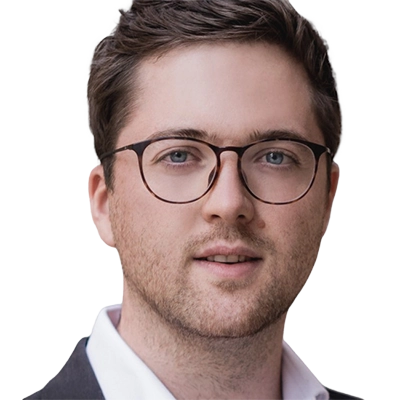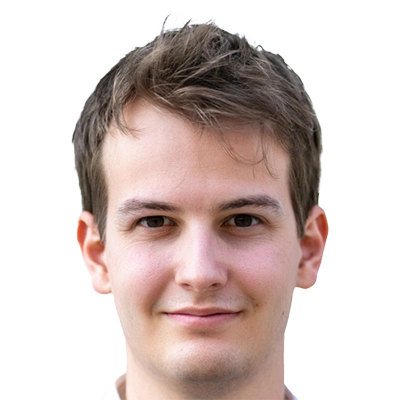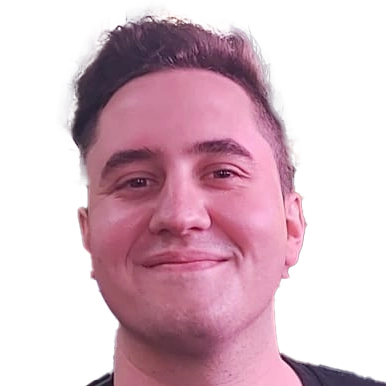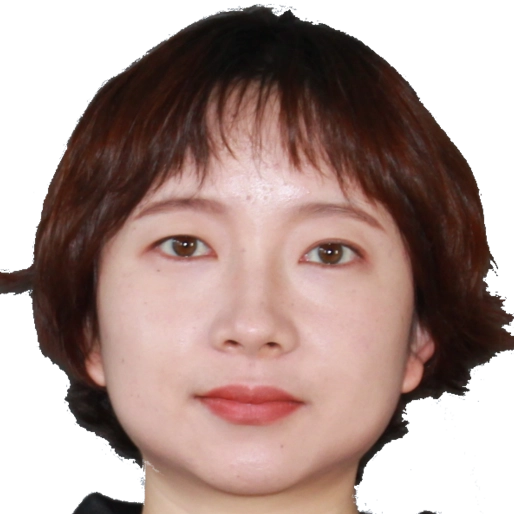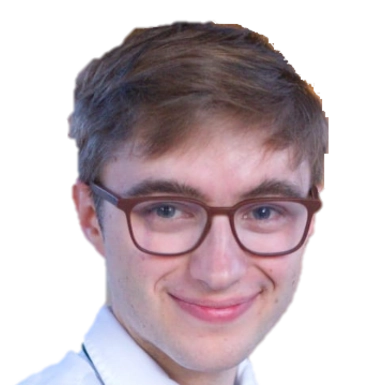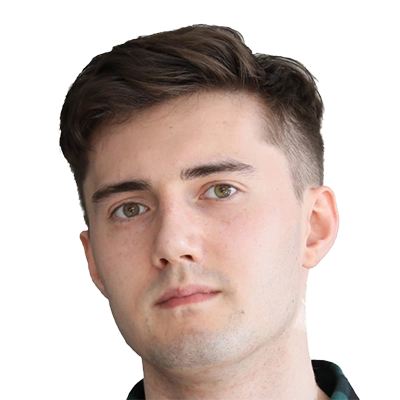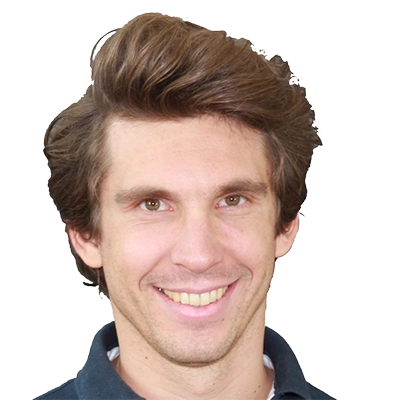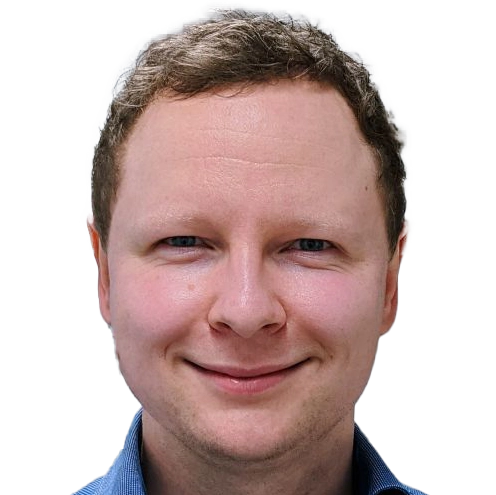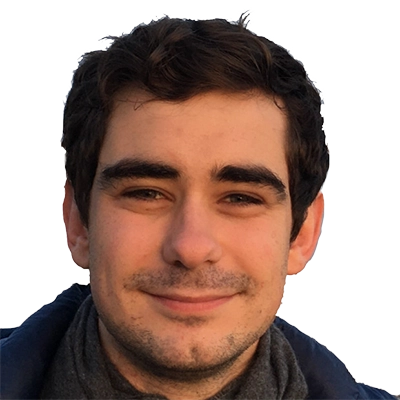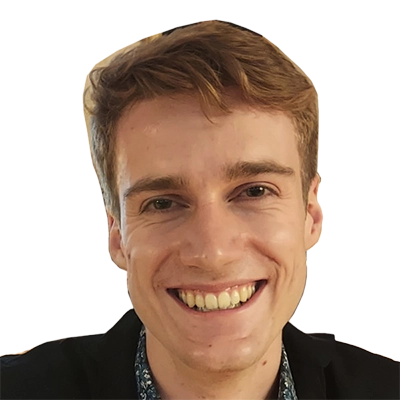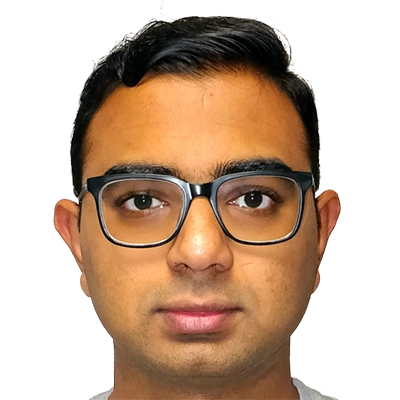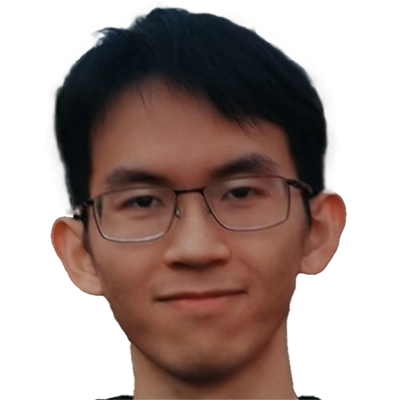Research Group Daniel Cremers
Daniel Cremers
holds the Chair for Computer Vision and Artificial Intelligence at TU Munich since 2009.
In 2002 he obtained a PhD in Computer Science from the University of Mannheim, Germany. Subsequently he spent two years as a postdoctoral researcher at the University of California, Los Angeles (UCLA) and one year as a permanent researcher at Siemens Corporate Research in Princeton, NJ. From 2005 until 2009 he was associate professor at the University of Bonn, Germany. In 2016, Daniel Cremers received the Gottfried Wilhelm Leibniz Award, the biggest award in German academia.
Team members @MCML
PostDocs
PhD Students
Recent News @MCML
Publications @MCML
2026
[177]
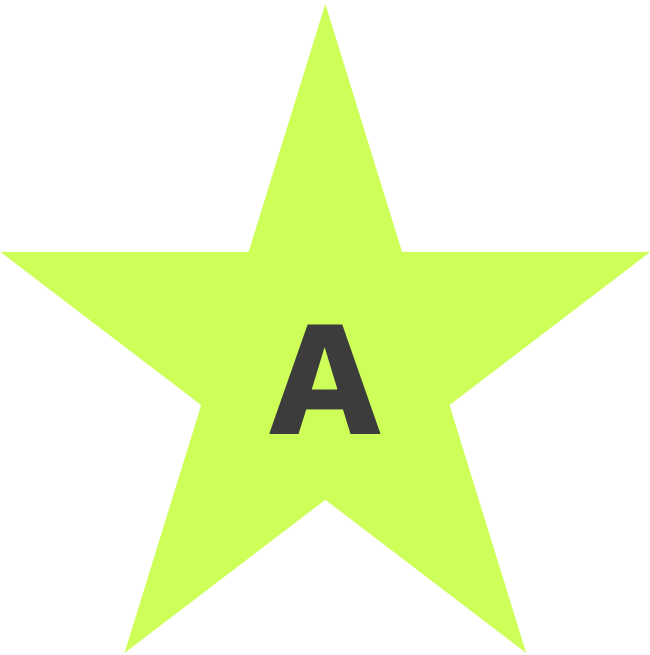
O. Dhaouadi • J. Meier • J. Kaiser • D. Cremers
GrounDiff: Diffusion-Based Ground Surface Generation from Digital Surface Models.
WACV 2026 - IEEE/CVF Winter Conference on Applications of Computer Vision. Tucson, AZ, USA, Mar 06-10, 2026. To be published. Preprint available. arXiv GitHub
GrounDiff: Diffusion-Based Ground Surface Generation from Digital Surface Models.
WACV 2026 - IEEE/CVF Winter Conference on Applications of Computer Vision. Tucson, AZ, USA, Mar 06-10, 2026. To be published. Preprint available. arXiv GitHub
[176]

J. Meier • F. Günther • R. Marin • O. Dhaouadi • J. Kaiser • D. Cremers
IDEAL-M3D: Instance Diversity-Enriched Active Learning for Monocular 3D Detection.
WACV 2026 - IEEE/CVF Winter Conference on Applications of Computer Vision. Tucson, AZ, USA, Mar 06-10, 2026. To be published. Preprint available. arXiv
IDEAL-M3D: Instance Diversity-Enriched Active Learning for Monocular 3D Detection.
WACV 2026 - IEEE/CVF Winter Conference on Applications of Computer Vision. Tucson, AZ, USA, Mar 06-10, 2026. To be published. Preprint available. arXiv
2025
[175]
S.-V. Bodea • R. G. Laiz • R. H. Williams • M. Gladkova • D. Thalmeier • B. Rieck • F. Sigmund • M. Piraud • A. Wohlschläger • D. Jüstel • A. Stroh • S. Schneider • G. G. Westmeyer
Cortex-Wide Preservation of Multi-Stimulus Information across Degrees of Network Synchronization.
Preprint (Dec. 2025). DOI
Cortex-Wide Preservation of Multi-Stimulus Information across Degrees of Network Synchronization.
Preprint (Dec. 2025). DOI
[174]
M. Gross • S. B. Matha • A. Fahmy • R. Song • D. Cremers • H. Meess
OccuFly: A 3D Vision Benchmark for Semantic Scene Completion from the Aerial Perspective.
Preprint (Dec. 2025). arXiv
OccuFly: A 3D Vision Benchmark for Semantic Scene Completion from the Aerial Perspective.
Preprint (Dec. 2025). arXiv
[173]
J. Meier • J. Michel • O. Dhaouadi • Y.-H. Yang • C. Reich • Z. Bauer • S. Roth • M. Pollefeys • J. Kaiser • D. Cremers
LeAD-M3D: Leveraging Asymmetric Distillation for Real-time Monocular 3D Detection.
Preprint (Dec. 2025). arXiv
LeAD-M3D: Leveraging Asymmetric Distillation for Real-time Monocular 3D Detection.
Preprint (Dec. 2025). arXiv
[172]

O. Dhaouadi • R. Marin • J. Meier • J. Kaiser • D. Cremers
OrthoLoC: UAV 6-DoF Localization and Calibration Using Orthographic Geodata.
NeurIPS 2025 - 39th Conference on Neural Information Processing Systems. San Diego, CA, USA, Nov 30-Dec 07, 2025. Oral Presentation. To be published. Preprint available. URL GitHub
OrthoLoC: UAV 6-DoF Localization and Calibration Using Orthographic Geodata.
NeurIPS 2025 - 39th Conference on Neural Information Processing Systems. San Diego, CA, USA, Nov 30-Dec 07, 2025. Oral Presentation. To be published. Preprint available. URL GitHub
[171]

N. Araslanov • A. Ribic • D. Cremers
FlowFeat: Pixel-Dense Embedding of Motion Profiles.
NeurIPS 2025 - 39th Conference on Neural Information Processing Systems. San Diego, CA, USA, Nov 30-Dec 07, 2025. Spotlight Presentation. To be published. Preprint available. URL
FlowFeat: Pixel-Dense Embedding of Motion Profiles.
NeurIPS 2025 - 39th Conference on Neural Information Processing Systems. San Diego, CA, USA, Nov 30-Dec 07, 2025. Spotlight Presentation. To be published. Preprint available. URL
[170]

H. Luo • Q. Cheng • D. Matos • H. K. Gadi • Y. Zhang • L. Liu • Y. Wang • N. Zeller • D. Cremers • L. Meng
TurnBack: A Geospatial Route Cognition Benchmark for Large Language Models through Reverse Route.
EMNLP 2025 - Conference on Empirical Methods in Natural Language Processing. Suzhou, China, Nov 04-09, 2025. DOI
TurnBack: A Geospatial Route Cognition Benchmark for Large Language Models through Reverse Route.
EMNLP 2025 - Conference on Empirical Methods in Natural Language Processing. Suzhou, China, Nov 04-09, 2025. DOI
[169]
Y. Xia • L. Shi • Y. Di • J. F. Henriques • D. Cremers
Text2Loc++: Generalizing 3D Point Cloud Localization from Natural Language.
Preprint (Nov. 2025). arXiv
Text2Loc++: Generalizing 3D Point Cloud Localization from Natural Language.
Preprint (Nov. 2025). arXiv
[168]
J. Xie • O. Dhaouadi • W. Chen • J. Meier • J. Kaiser • D. Cremers
CoProU-VO: Combining Projected Uncertainty for End-to-End Unsupervised Monocular Visual Odometry.
GCPR 2025 - German Conference on Pattern Recognition. Freiburg, Germany, Oct 23-26, 2025. Best Paper Award. To be published. Preprint available. arXiv
CoProU-VO: Combining Projected Uncertainty for End-to-End Unsupervised Monocular Visual Odometry.
GCPR 2025 - German Conference on Pattern Recognition. Freiburg, Germany, Oct 23-26, 2025. Best Paper Award. To be published. Preprint available. arXiv
[167]
Y. Xia • W. Ji • W. Chen • D. Cremers
CSG-Fusion: Consistent Sparse-View Gaussian Splatting via Matching-based Fusion.
E2E3D @ICCV 2025 - Workshop on End-to-End 3D Learning at the IEEE/CVF International Conference on Computer Vision. Honolulu, Hawai’i, Oct 19-23, 2025. Best Paper Award. To be published. Preprint available. URL
CSG-Fusion: Consistent Sparse-View Gaussian Splatting via Matching-based Fusion.
E2E3D @ICCV 2025 - Workshop on End-to-End 3D Learning at the IEEE/CVF International Conference on Computer Vision. Honolulu, Hawai’i, Oct 19-23, 2025. Best Paper Award. To be published. Preprint available. URL
[166]

W. Chen • G. Zhang • F. Wimbauer • R. Wang • N. Araslanov • A. Vedaldi • D. Cremers
Back on Track: Bundle Adjustment for Dynamic Scene Reconstruction.
ICCV 2025 - IEEE/CVF International Conference on Computer Vision. Honolulu, Hawai’i, Oct 19-23, 2025. To be published. Preprint available. arXiv
Back on Track: Bundle Adjustment for Dynamic Scene Reconstruction.
ICCV 2025 - IEEE/CVF International Conference on Computer Vision. Honolulu, Hawai’i, Oct 19-23, 2025. To be published. Preprint available. arXiv
[165]

R. Hartwig • D. Muhle • R. Marin • D. Cremers
GECO: Geometrically Consistent Embedding with Lightspeed Inference.
ICCV 2025 - IEEE/CVF International Conference on Computer Vision. Honolulu, Hawai’i, Oct 19-23, 2025. To be published. Preprint available. URL GitHub
GECO: Geometrically Consistent Embedding with Lightspeed Inference.
ICCV 2025 - IEEE/CVF International Conference on Computer Vision. Honolulu, Hawai’i, Oct 19-23, 2025. To be published. Preprint available. URL GitHub
[164]

A. Jevtić • C. Reich • F. Wimbauer • O. Hahn • C. Rupprecht • S. Roth • D. Cremers
Feed-Forward SceneDINO for Unsupervised Semantic Scene Completion.
ICCV 2025 - IEEE/CVF International Conference on Computer Vision. Honolulu, Hawai’i, Oct 19-23, 2025. To be published. Preprint available. URL GitHub
Feed-Forward SceneDINO for Unsupervised Semantic Scene Completion.
ICCV 2025 - IEEE/CVF International Conference on Computer Vision. Honolulu, Hawai’i, Oct 19-23, 2025. To be published. Preprint available. URL GitHub
[163]

Y. Wang • Z. Xiong • C. Liu • A. J. Stewart • T. Dujardin • N. I. Bountos • A. Zavras • F. Gerken • I. Papoutsis • L. Leal-Taixé • X. Zhu
Towards a Unified Copernicus Foundation Model for Earth Vision.
ICCV 2025 - IEEE/CVF International Conference on Computer Vision. Honolulu, Hawai’i, Oct 19-23, 2025. To be published. Preprint available. arXiv GitHub
Towards a Unified Copernicus Foundation Model for Earth Vision.
ICCV 2025 - IEEE/CVF International Conference on Computer Vision. Honolulu, Hawai’i, Oct 19-23, 2025. To be published. Preprint available. arXiv GitHub
[162]

P. Wulff • F. Wimbauer • D. Muhle • D. Cremers
Dream-to-Recon: Monocular 3D Reconstruction with Diffusion-Depth Distillation from Single Images.
ICCV 2025 - IEEE/CVF International Conference on Computer Vision. Honolulu, Hawai’i, Oct 19-23, 2025. To be published. Preprint available. URL
Dream-to-Recon: Monocular 3D Reconstruction with Diffusion-Depth Distillation from Single Images.
ICCV 2025 - IEEE/CVF International Conference on Computer Vision. Honolulu, Hawai’i, Oct 19-23, 2025. To be published. Preprint available. URL
[161]

Y. Xia • Y. Lu • R. Song • O. Dhaouadi • J. F. Henriques • D. Cremers
TrafficLoc: Localizing Traffic Surveillance Cameras in 3D Scenes.
ICCV 2025 - IEEE/CVF International Conference on Computer Vision. Honolulu, Hawai’i, Oct 19-23, 2025. To be published. Preprint available. URL GitHub
TrafficLoc: Localizing Traffic Surveillance Cameras in 3D Scenes.
ICCV 2025 - IEEE/CVF International Conference on Computer Vision. Honolulu, Hawai’i, Oct 19-23, 2025. To be published. Preprint available. URL GitHub
[160]
X. Gong • O. Hahn • C. Reich • K. Singh • S. Schaub-Meyer • D. Cremers • S. Roth
Motion-Refined DINOSAUR for Unsupervised Multi-Object Discovery.
ILR+G @ICCV 2025 - Workshop on Instance-Level Recognition and Generation at the IEEE/CVF International Conference on Computer Vision. Honolulu, Hawai’i, Oct 19-23, 2025. To be published. Preprint available. arXiv GitHub
Motion-Refined DINOSAUR for Unsupervised Multi-Object Discovery.
ILR+G @ICCV 2025 - Workshop on Instance-Level Recognition and Generation at the IEEE/CVF International Conference on Computer Vision. Honolulu, Hawai’i, Oct 19-23, 2025. To be published. Preprint available. arXiv GitHub
[159]

M. de Mayo • D. Cremers • T. Pire
The Monado SLAM Dataset for Egocentric Visual-Inertial Tracking.
IROS 2025 - IEEE/RSJ International Conference on Intelligent Robots and Systems. Hangzhou, China, Oct 19-25, 2025. DOI
The Monado SLAM Dataset for Egocentric Visual-Inertial Tracking.
IROS 2025 - IEEE/RSJ International Conference on Intelligent Robots and Systems. Hangzhou, China, Oct 19-25, 2025. DOI
[158]

S. Wang • Q. Cheng • Q. Cheng • W. Zhang • S.-C. Wu • N. Zeller • D. Cremers • N. Navab
VoxNeRF: Bridging Voxel Representation and Neural Radiance Fields for Enhanced Indoor View Synthesis.
IROS 2025 - IEEE/RSJ International Conference on Intelligent Robots and Systems. Hangzhou, China, Oct 19-25, 2025. DOI
VoxNeRF: Bridging Voxel Representation and Neural Radiance Fields for Enhanced Indoor View Synthesis.
IROS 2025 - IEEE/RSJ International Conference on Intelligent Robots and Systems. Hangzhou, China, Oct 19-25, 2025. DOI
[157]
R. Liao • G. Huang • Q. Cheng • T. Seidl • D. Cremers • V. Tresp
When and Where do Events Switch in Multi-Event Video Generation?
LongVid-Foundations @ICCV 2025 - 1st Workshop on Long Multi-Scene Video Foundations: Generation, Understanding and Evaluation at the IEEE/CVF International Conference on Computer Vision. Honolulu, Hawai’i, Oct 19-23, 2025. To be published. Preprint available. arXiv
When and Where do Events Switch in Multi-Event Video Generation?
LongVid-Foundations @ICCV 2025 - 1st Workshop on Long Multi-Scene Video Foundations: Generation, Understanding and Evaluation at the IEEE/CVF International Conference on Computer Vision. Honolulu, Hawai’i, Oct 19-23, 2025. To be published. Preprint available. arXiv
[156]
N. T. Duc • A. Sonnweber • M. Weber • N. Araslanov • D. Cremers
The Diashow Paradox: Stronger 3D-Aware Representations Emerge from Image Sets, Not Videos.
SP4V @ICCV 2025 - Structural Priors for Vision Workshop at the IEEE/CVF International Conference on Computer Vision. Honolulu, Hawai’i, Oct 19-23, 2025. To be published. Preprint available. URL
The Diashow Paradox: Stronger 3D-Aware Representations Emerge from Image Sets, Not Videos.
SP4V @ICCV 2025 - Structural Priors for Vision Workshop at the IEEE/CVF International Conference on Computer Vision. Honolulu, Hawai’i, Oct 19-23, 2025. To be published. Preprint available. URL
[155]
S. Chen • J. Liu • Z. Han • Y. Xia • D. Cremers • P. Torr • V. Tresp • J. Gu
True Multimodal In-Context Learning Needs Attention to the Visual Context.
COLM 2025 - Conference on Language Modeling. Montreal, Canada, Oct 07-09, 2025. URL GitHub
True Multimodal In-Context Learning Needs Attention to the Visual Context.
COLM 2025 - Conference on Language Modeling. Montreal, Canada, Oct 07-09, 2025. URL GitHub
[154]

W. Zhang • Q. Cheng • D. Skuddis • N. Zeller • D. Cremers • N. Haala
HI-SLAM2: Geometry-Aware Gaussian SLAM for Fast Monocular Scene Reconstruction.
IEEE Transactions on Robotics 41. Oct. 2025. DOI GitHub
HI-SLAM2: Geometry-Aware Gaussian SLAM for Fast Monocular Scene Reconstruction.
IEEE Transactions on Robotics 41. Oct. 2025. DOI GitHub
[153]

H. Li • X. Meng • X. Zuo • Z. Liu • H. Wang • D. Cremers
PG-SLAM: Photo-realistic and Geometry-aware RGB-D SLAM in Dynamic Environments.
IEEE Transactions on Robotics Early Access. Oct. 2025. DOI
PG-SLAM: Photo-realistic and Geometry-aware RGB-D SLAM in Dynamic Environments.
IEEE Transactions on Robotics Early Access. Oct. 2025. DOI
[152]
T. Hannan • S. Wu • M. Weber • S. Shit • J. Gu • R. Koner • A. Ošep • L. Leal-Taixé • T. Seidl
SVAG-Bench: A Large-Scale Benchmark for Multi-Instance Spatio-temporal Video Action Grounding.
Preprint (Oct. 2025). arXiv
SVAG-Bench: A Large-Scale Benchmark for Multi-Instance Spatio-temporal Video Action Grounding.
Preprint (Oct. 2025). arXiv
[151]

D. Scholz • A. C. Erdur • V. Ehm • A. Meyer-Baese • J. C. Peeken • D. Rückert • B. Wiestler
MM-DINOv2: Adapting Foundation Models for Multi-Modal Medical Image Analysis.
MICCAI 2025 - 28th International Conference on Medical Image Computing and Computer Assisted Intervention. Daejeon, Republic of Korea, Sep 23-27, 2025. DOI
MM-DINOv2: Adapting Foundation Models for Multi-Modal Medical Image Analysis.
MICCAI 2025 - 28th International Conference on Medical Image Computing and Computer Assisted Intervention. Daejeon, Republic of Korea, Sep 23-27, 2025. DOI
[150]

D. Scholz • A. C. Erdur • R. Holland • V. Ehm • J. C. Peeken • B. Wiestler • D. Rückert
Contrastive Anatomy-Contrast Disentanglement: A Domain-General MRI Harmonization Method.
MICCAI 2025 - 28th International Conference on Medical Image Computing and Computer Assisted Intervention. Daejeon, Republic of Korea, Sep 23-27, 2025. DOI
Contrastive Anatomy-Contrast Disentanglement: A Domain-General MRI Harmonization Method.
MICCAI 2025 - 28th International Conference on Medical Image Computing and Computer Assisted Intervention. Daejeon, Republic of Korea, Sep 23-27, 2025. DOI
[149]
Y. Hu • Y. Xue • S. Klenk • D. Cremers • G. Pons-Moll
ControlEvents: Controllable Synthesis of Event Camera Datawith Foundational Prior from Image Diffusion Models.
Preprint (Sep. 2025). arXiv
ControlEvents: Controllable Synthesis of Event Camera Datawith Foundational Prior from Image Diffusion Models.
Preprint (Sep. 2025). arXiv
[148]
G. Zhang • S. Qian • X. Wang • D. Cremers
ViSTA-SLAM: Visual SLAM with Symmetric Two-view Association.
Preprint (Sep. 2025). arXiv GitHub
ViSTA-SLAM: Visual SLAM with Symmetric Two-view Association.
Preprint (Sep. 2025). arXiv GitHub
[147]
I. A. Petrov • V. Guzov • R. Marin • E. Aksan • X. Chen • D. Cremers • T. Beeler • G. Pons-Moll
ECHO: Ego-Centric modeling of Human-Object interactions.
Preprint (Aug. 2025). arXiv
ECHO: Ego-Centric modeling of Human-Object interactions.
Preprint (Aug. 2025). arXiv
[146]
W. Li • W. Chen • S. Qian • J. Chen • D. Cremers • H. Li
DynSUP: Dynamic Gaussian Splatting from An Unposed Image Pair.
ICVSS 2025 - International Computer Vision Summer School: Computer Vision for Spatial Intelligence. Sicily, Italy, Jul 06-12, 2025. To be published. Preprint available. arXiv GitHub
DynSUP: Dynamic Gaussian Splatting from An Unposed Image Pair.
ICVSS 2025 - International Computer Vision Summer School: Computer Vision for Spatial Intelligence. Sicily, Italy, Jul 06-12, 2025. To be published. Preprint available. arXiv GitHub
[145]
V. Ehm • N. El Amrani • Y. Xie • L. Bastian • M. Gao • W. Wang • L. Sang • D. Cao • Z. Lähner • D. Cremers • F. Bernard
Beyond Complete Shapes: A Benchmark for Quantitative Evaluation of 3D Shape Surface Matching Algorithms.
SGP 2025 - Symposium on Geometry Processing. Bilbao, Spain, Jun 30-Jul 04, 2025. DOI GitHub
Beyond Complete Shapes: A Benchmark for Quantitative Evaluation of 3D Shape Surface Matching Algorithms.
SGP 2025 - Symposium on Geometry Processing. Bilbao, Spain, Jun 30-Jul 04, 2025. DOI GitHub
[144]
O. Dhaouadi • J. Meier • J. Kaiser • D. Cremers
Shape Your Ground: Refining Road Surfaces Beyond Planar Representations.
IV 2025 - 36th IEEE Intelligent Vehicles Symposium. Napoca, Romania, Jun 22-25, 2025. DOI
Shape Your Ground: Refining Road Surfaces Beyond Planar Representations.
IV 2025 - 36th IEEE Intelligent Vehicles Symposium. Napoca, Romania, Jun 22-25, 2025. DOI
[143]
O. Dhaouadi • J. Meier • L. Wahl • J. Kaiser • L. Scalerandi • N. Wandelburg • Z. Zhou • N. Berinpanathan • H. Banzhaf • D. Cremers
Highly Accurate and Diverse Traffic Data: The DeepScenario Open 3D Dataset.
IV 2025 - 36th IEEE Intelligent Vehicles Symposium. Napoca, Romania, Jun 22-25, 2025. DOI
Highly Accurate and Diverse Traffic Data: The DeepScenario Open 3D Dataset.
IV 2025 - 36th IEEE Intelligent Vehicles Symposium. Napoca, Romania, Jun 22-25, 2025. DOI
[142]
F. Förster • Q. Khan • D. Cremers
Decentralized Reinforcement Learning for Multi-Agent Navigation in Unconstrained Environments.
IV 2025 - 36th IEEE Intelligent Vehicles Symposium. Napoca, Romania, Jun 22-25, 2025. DOI
Decentralized Reinforcement Learning for Multi-Agent Navigation in Unconstrained Environments.
IV 2025 - 36th IEEE Intelligent Vehicles Symposium. Napoca, Romania, Jun 22-25, 2025. DOI
[141]
J. Meier • L. Inchingolo • O. Dhaouadi • Y. Xia • J. Kaiser • D. Cremers
MonoCT: Overcoming Monocular 3D Detection Domain Shift with Consistent Teacher Models.
IV 2025 - 36th IEEE Intelligent Vehicles Symposium. Napoca, Romania, Jun 22-25, 2025. To be published. Preprint available. arXiv
MonoCT: Overcoming Monocular 3D Detection Domain Shift with Consistent Teacher Models.
IV 2025 - 36th IEEE Intelligent Vehicles Symposium. Napoca, Romania, Jun 22-25, 2025. To be published. Preprint available. arXiv
[140]

C. Curreli • D. Muhle • A. Saroha • Z. Ye • R. Marin • D. Cremers
Nonisotropic Gaussian Diffusion for Realistic 3D Human Motion Prediction.
CVPR 2025 - IEEE/CVF Conference on Computer Vision and Pattern Recognition. Nashville, TN, USA, Jun 11-15, 2025. DOI GitHub
Nonisotropic Gaussian Diffusion for Realistic 3D Human Motion Prediction.
CVPR 2025 - IEEE/CVF Conference on Computer Vision and Pattern Recognition. Nashville, TN, USA, Jun 11-15, 2025. DOI GitHub
[139]

T. Dagès • S. Weber • Y.-W. E. Lin • R. Talmon • D. Cremers • M. Lindenbaum • A. M. Bruckstein • R. Kimmel
Finsler Multi-Dimensional Scaling: Manifold Learning for Asymmetric Dimensionality Reduction and Embedding.
CVPR 2025 - IEEE/CVF Conference on Computer Vision and Pattern Recognition. Nashville, TN, USA, Jun 11-15, 2025. DOI
Finsler Multi-Dimensional Scaling: Manifold Learning for Asymmetric Dimensionality Reduction and Embedding.
CVPR 2025 - IEEE/CVF Conference on Computer Vision and Pattern Recognition. Nashville, TN, USA, Jun 11-15, 2025. DOI
[138]

O. Hahn • C. Reich • N. Araslanov • D. Cremers • C. Rupprecht • S. Roth
Scene-Centric Unsupervised Panoptic Segmentation.
CVPR 2025 - IEEE/CVF Conference on Computer Vision and Pattern Recognition. Nashville, TN, USA, Jun 11-15, 2025. DOI GitHub
Scene-Centric Unsupervised Panoptic Segmentation.
CVPR 2025 - IEEE/CVF Conference on Computer Vision and Pattern Recognition. Nashville, TN, USA, Jun 11-15, 2025. DOI GitHub
[137]

R. Qorbani • G. Villani • T. Panagiotakopoulos • M. B. Colomer • L. Härenstam-Nielsen • M. Segu • P. L. Dovesi • J. Karlgren • D. Cremers • F. Tombari • M. Poggi
Semantic Library Adaptation: LoRA Retrieval and Fusion for Open-Vocabulary Semantic Segmentation.
CVPR 2025 - IEEE/CVF Conference on Computer Vision and Pattern Recognition. Nashville, TN, USA, Jun 11-15, 2025. DOI
Semantic Library Adaptation: LoRA Retrieval and Fusion for Open-Vocabulary Semantic Segmentation.
CVPR 2025 - IEEE/CVF Conference on Computer Vision and Pattern Recognition. Nashville, TN, USA, Jun 11-15, 2025. DOI
[136]

P. Roetzer • V. Ehm • D. Cremers • Z. Lähner • F. Bernard
Higher-Order Ratio Cycles for Fast and Globally Optimal Shape Matching.
CVPR 2025 - IEEE/CVF Conference on Computer Vision and Pattern Recognition. Nashville, TN, USA, Jun 11-15, 2025. DOI
Higher-Order Ratio Cycles for Fast and Globally Optimal Shape Matching.
CVPR 2025 - IEEE/CVF Conference on Computer Vision and Pattern Recognition. Nashville, TN, USA, Jun 11-15, 2025. DOI
[135]

L. Sang • Z. Canfes • D. Cao • R. Marin • F. Bernard • D. Cremers
4Deform: Neural Surface Deformation for Robust Shape Interpolation.
CVPR 2025 - IEEE/CVF Conference on Computer Vision and Pattern Recognition. Nashville, TN, USA, Jun 11-15, 2025. DOI
4Deform: Neural Surface Deformation for Robust Shape Interpolation.
CVPR 2025 - IEEE/CVF Conference on Computer Vision and Pattern Recognition. Nashville, TN, USA, Jun 11-15, 2025. DOI
[134]

D. Schnaus • N. Araslanov • D. Cremers
It's a (Blind) Match! Towards Vision-Language Correspondence without Parallel Data.
CVPR 2025 - IEEE/CVF Conference on Computer Vision and Pattern Recognition. Nashville, TN, USA, Jun 11-15, 2025. DOI
It's a (Blind) Match! Towards Vision-Language Correspondence without Parallel Data.
CVPR 2025 - IEEE/CVF Conference on Computer Vision and Pattern Recognition. Nashville, TN, USA, Jun 11-15, 2025. DOI
[133]

D. Sinitsyn • L. Härenstam-Nielsen • D. Cremers
PRaDA: Projective Radial Distortion Averaging.
CVPR 2025 - IEEE/CVF Conference on Computer Vision and Pattern Recognition. Nashville, TN, USA, Jun 11-15, 2025. DOI
PRaDA: Projective Radial Distortion Averaging.
CVPR 2025 - IEEE/CVF Conference on Computer Vision and Pattern Recognition. Nashville, TN, USA, Jun 11-15, 2025. DOI
[132]

F. Wimbauer • W. Chen • D. Muhle • C. Rupprecht • D. Cremers
AnyCam: Learning to Recover Camera Poses and Intrinsics from Casual Videos.
CVPR 2025 - IEEE/CVF Conference on Computer Vision and Pattern Recognition. Nashville, TN, USA, Jun 11-15, 2025. DOI
AnyCam: Learning to Recover Camera Poses and Intrinsics from Casual Videos.
CVPR 2025 - IEEE/CVF Conference on Computer Vision and Pattern Recognition. Nashville, TN, USA, Jun 11-15, 2025. DOI
[131]

Y. Xie • V. Ehm • P. Roetzer • N. Amrani • M. Gao • F. Bernard • D. Cremers
EchoMatch: Partial-to-Partial Shape Matching via Correspondence Reflection.
CVPR 2025 - IEEE/CVF Conference on Computer Vision and Pattern Recognition. Nashville, TN, USA, Jun 11-15, 2025. DOI
EchoMatch: Partial-to-Partial Shape Matching via Correspondence Reflection.
CVPR 2025 - IEEE/CVF Conference on Computer Vision and Pattern Recognition. Nashville, TN, USA, Jun 11-15, 2025. DOI
[130]

Y. Yuan • Y. Xia • D. Cremers • M. Sester
SparseAlign: a Fully Sparse Framework for Cooperative Object Detection.
CVPR 2025 - IEEE/CVF Conference on Computer Vision and Pattern Recognition. Nashville, TN, USA, Jun 11-15, 2025. DOI
SparseAlign: a Fully Sparse Framework for Cooperative Object Detection.
CVPR 2025 - IEEE/CVF Conference on Computer Vision and Pattern Recognition. Nashville, TN, USA, Jun 11-15, 2025. DOI
[129]

G. Zhang • M. L. A. Fok • J. Ma • Y. Xia • D. Cremers • P. Torr • V. Tresp • J. Gu
Localizing Events in Videos with Multimodal Queries.
CVPR 2025 - IEEE/CVF Conference on Computer Vision and Pattern Recognition. Nashville, TN, USA, Jun 11-15, 2025. DOI
Localizing Events in Videos with Multimodal Queries.
CVPR 2025 - IEEE/CVF Conference on Computer Vision and Pattern Recognition. Nashville, TN, USA, Jun 11-15, 2025. DOI
[128]
Y. Luo • R. Hoffmann • Y. Xia • O. Wysocki • B. Schwab • T. H. Kolbe • D. Cremers
RADLER: Radar Object Detection Leveraging Semantic 3D City Models and Self-Supervised Radar-Image Learning.
PBVS @CVPR 2025 - 21st IEEE Workshop on Perception Beyond the Visible Spectrum at IEEE/CVF Conference on Computer Vision and Pattern Recognition. Nashville, TN, USA, Jun 11-15, 2025. DOI GitHub
RADLER: Radar Object Detection Leveraging Semantic 3D City Models and Self-Supervised Radar-Image Learning.
PBVS @CVPR 2025 - 21st IEEE Workshop on Perception Beyond the Visible Spectrum at IEEE/CVF Conference on Computer Vision and Pattern Recognition. Nashville, TN, USA, Jun 11-15, 2025. DOI GitHub
[127]

Y. Ma • Q. Khan • D. Cremers
MA-DV2F: A Multi-Agent Navigation Framework Using Dynamic Velocity Vector Field.
IEEE Robotics and Automation Letters 10.6. Jun. 2025. DOI GitHub
MA-DV2F: A Multi-Agent Navigation Framework Using Dynamic Velocity Vector Field.
IEEE Robotics and Automation Letters 10.6. Jun. 2025. DOI GitHub
[126]

S. Wang • Q. Cheng • Q. Cheng • W. Zhang • S.-C. Wu • N. Zeller • D. Cremers • N. Navab
VoxNeRF: Bridging Voxel Representation and Neural Radiance Fields for Enhanced Indoor View Synthesis.
IEEE Robotics and Automation Letters 10.6. Jun. 2025. DOI
VoxNeRF: Bridging Voxel Representation and Neural Radiance Fields for Enhanced Indoor View Synthesis.
IEEE Robotics and Automation Letters 10.6. Jun. 2025. DOI
[125]

J. Meier • L. Inchingolo • O. Dhaouadi • Y. Xia • J. Kaiser • D. Cremers
MonoCT: Overcoming Monocular 3D Detection Domain Shift with Consistent Teacher Models.
ICRA 2025 - IEEE International Conference on Robotics and Automation. Atlanta, GA, USA, May 19-23, 2025. DOI
MonoCT: Overcoming Monocular 3D Detection Domain Shift with Consistent Teacher Models.
ICRA 2025 - IEEE International Conference on Robotics and Automation. Atlanta, GA, USA, May 19-23, 2025. DOI
[124]
N. De La Fuente • M. Pilligua • D. Vidal • A. Soutiff • C. Curreli • D. Cremers • A. Barsky
Prototype Augmented Hypernetworks for Continual Learning.
Preprint (May. 2025). arXiv
Prototype Augmented Hypernetworks for Continual Learning.
Preprint (May. 2025). arXiv
[123]
C. Koke • Y. Shen • A. Saroha • M. Eisenberger • B. Rieck • M. M. Bronstein • D. Cremers
Graph Networks struggle with variable Scale.
ICBINB @ICLR 2025 - Workshop I Can’t Believe It’s Not Better: Challenges in Applied Deep Learning at the 13th International Conference on Learning Representations. Singapore, Apr 24-28, 2025. URL
Graph Networks struggle with variable Scale.
ICBINB @ICLR 2025 - Workshop I Can’t Believe It’s Not Better: Challenges in Applied Deep Learning at the 13th International Conference on Learning Representations. Singapore, Apr 24-28, 2025. URL
[122]

L. Sang • Z. Canfes • D. Cao • F. Bernard • D. Cremers
Implicit Neural Surface Deformation with Explicit Velocity Fields.
ICLR 2025 - 13th International Conference on Learning Representations. Singapore, Apr 24-28, 2025. URL GitHub
Implicit Neural Surface Deformation with Explicit Velocity Fields.
ICLR 2025 - 13th International Conference on Learning Representations. Singapore, Apr 24-28, 2025. URL GitHub
[121]

M. Weber • L. Yu • Q. Yu • X. Deng • X. Shen • D. Cremers • L.-C. Chen
MaskBit: Embedding-free Image Generation via Bit Tokens.
ICLR 2025 - 13th International Conference on Learning Representations. Singapore, Apr 24-28, 2025. Journal Track. URL URL
MaskBit: Embedding-free Image Generation via Bit Tokens.
ICLR 2025 - 13th International Conference on Learning Representations. Singapore, Apr 24-28, 2025. Journal Track. URL URL
[120]
C. Koke • D. Schnaus • Y. Shen • A. Saroha • M. Eisenberger • B. Rieck • M. M. Bronstein • D. Cremers
On multi-scale Graph Representation Learning.
LMRL @ICLR 2025 - Workshop on Learning Meaningful Representations of Life at the 13th International Conference on Learning Representations. Singapore, Apr 24-28, 2025. URL
On multi-scale Graph Representation Learning.
LMRL @ICLR 2025 - Workshop on Learning Meaningful Representations of Life at the 13th International Conference on Learning Representations. Singapore, Apr 24-28, 2025. URL
[119]
C. Koke • Y. Shen • A. Saroha • M. Eisenberger • B. Rieck • M. M. Bronstein • D. Cremers
On Incorporating Scale into Graph Networks.
MLMP @ICLR 2025 - Workshop on Machine Learning Multiscale Processes at the 13th International Conference on Learning Representations. Singapore, Apr 24-28, 2025. Best Paper Award. URL
On Incorporating Scale into Graph Networks.
MLMP @ICLR 2025 - Workshop on Machine Learning Multiscale Processes at the 13th International Conference on Learning Representations. Singapore, Apr 24-28, 2025. Best Paper Award. URL
[118]
Y. Burkhardt • S. Schaefer • S. Leutenegger
SuperEvent: Cross-Modal Learning of Event-based Keypoint Detection.
Preprint (Apr. 2025). arXiv GitHub
SuperEvent: Cross-Modal Learning of Event-based Keypoint Detection.
Preprint (Apr. 2025). arXiv GitHub
[117]
L. Sang • Z. Canfes • D. Cao • R. Marin • F. Bernard • D. Cremers
TwoSquared: 4D Generation from 2D Image Pairs.
Preprint (Apr. 2025). arXiv
TwoSquared: 4D Generation from 2D Image Pairs.
Preprint (Apr. 2025). arXiv
[116]
W. Yuan • Q. Khan • V. Golkov
Generation of Musical Timbres using a Text-Guided Diffusion Model.
Preprint (Apr. 2025). arXiv GitHub
Generation of Musical Timbres using a Text-Guided Diffusion Model.
Preprint (Apr. 2025). arXiv GitHub
[115]
Y.-J. Li • M. Gladkova • Y. Xia • R. Wang • D. Cremers
VXP: Voxel-Cross-Pixel Large-Scale Camera-LiDAR Place Recognition.
3DV 2025 - 12th International Conference on 3D Vision. Singapore, Mar 25-28, 2025. DOI
VXP: Voxel-Cross-Pixel Large-Scale Camera-LiDAR Place Recognition.
3DV 2025 - 12th International Conference on 3D Vision. Singapore, Mar 25-28, 2025. DOI
[114]
J. Seidenschwarz • Q. Zhou • B. Duisterhof • D. Ramanan • L. Leal-Taixé
DynOMo: Online Point Tracking by Dynamic Online Monocular Gaussian Reconstruction.
3DV 2025 - 12th International Conference on 3D Vision. Singapore, Mar 25-28, 2025. DOI
DynOMo: Online Point Tracking by Dynamic Online Monocular Gaussian Reconstruction.
3DV 2025 - 12th International Conference on 3D Vision. Singapore, Mar 25-28, 2025. DOI
[113]
H. Zeng • M. Gao • D. Cremers
CoE: Deep Coupled Embedding for Non-Rigid Point Cloud Correspondences.
3DV 2025 - 12th International Conference on 3D Vision. Singapore, Mar 25-28, 2025. DOI
CoE: Deep Coupled Embedding for Non-Rigid Point Cloud Correspondences.
3DV 2025 - 12th International Conference on 3D Vision. Singapore, Mar 25-28, 2025. DOI
[112]
Y. Shen
Probabilistic Modeling and Uncertainty Awareness in Deep learning.
Dissertation TU München. Mar. 2025. URL
Probabilistic Modeling and Uncertainty Awareness in Deep learning.
Dissertation TU München. Mar. 2025. URL
[111]
A. Liebeskind • J. R. Schüre • M. S. Fabian • S. Weinmüller • P. Schünke • V. Golkov • D. Cremers • M. Zaiss
The Pulseq-CEST Library: definition of preparations and simulations, example data, and example evaluations.
Magnetic Resonance Materials in Physics, Biology and Medicine. Mar. 2025. DOI
The Pulseq-CEST Library: definition of preparations and simulations, example data, and example evaluations.
Magnetic Resonance Materials in Physics, Biology and Medicine. Mar. 2025. DOI
[110]
Z. Shi • X. Zhang • W. Xu • Y. Xia • Y. Zang • S. Shen • C. Wang
L2RSI: Cross-view LiDAR-based Place Recognition for Large-scale Urban Scenes via Remote Sensing Imagery.
Preprint (Mar. 2025). arXiv GitHub
L2RSI: Cross-view LiDAR-based Place Recognition for Large-scale Urban Scenes via Remote Sensing Imagery.
Preprint (Mar. 2025). arXiv GitHub
[109]
N. P. A. Vu • A. Saroha • O. Litany • D. Cremers
GAS-NeRF: Geometry-Aware Stylization of Dynamic Radiance Fields.
Preprint (Mar. 2025). arXiv
GAS-NeRF: Geometry-Aware Stylization of Dynamic Radiance Fields.
Preprint (Mar. 2025). arXiv
[108]

O. Wysocki • Y. Tan • T. Froech • Y. Xia • M. Wysocki • L. Hoegner • D. Cremers • C. Holst
ZAHA: Introducing the Level of Facade Generalization and the Large-Scale Point Cloud Facade Semantic Segmentation Benchmark Dataset.
WACV 2025 - IEEE/CVF Winter Conference on Applications of Computer Vision. Tucson, AZ, USA, Feb 28-Mar 04, 2025. DOI GitHub
ZAHA: Introducing the Level of Facade Generalization and the Large-Scale Point Cloud Facade Semantic Segmentation Benchmark Dataset.
WACV 2025 - IEEE/CVF Winter Conference on Applications of Computer Vision. Tucson, AZ, USA, Feb 28-Mar 04, 2025. DOI GitHub
[107]

F. Hofherr • B. Haefner • D. Cremers
On Neural BRDFs: A Thorough Comparison of State-of-the-Art Approaches.
WACV 2025 - IEEE/CVF Winter Conference on Applications of Computer Vision. Tucson, AZ, USA, Feb 28-Mar 04, 2025. Oral Presentation. DOI
On Neural BRDFs: A Thorough Comparison of State-of-the-Art Approaches.
WACV 2025 - IEEE/CVF Winter Conference on Applications of Computer Vision. Tucson, AZ, USA, Feb 28-Mar 04, 2025. Oral Presentation. DOI
[106]
T. Fröch • O. Wysocki • Y. Xia • J. Xie • B. Schwab • D. Cremers • T. H. Kolbe
FacaDiffy: Inpainting Unseen Facade Parts Using Diffusion Models.
Preprint (Feb. 2025). arXiv GitHub
FacaDiffy: Inpainting Unseen Facade Parts Using Diffusion Models.
Preprint (Feb. 2025). arXiv GitHub
[105]
B. Häfner
Physically-Based Inverse Problems for High-Quality 3D Reconstruction.
Dissertation TU München. Jan. 2025. URL
Physically-Based Inverse Problems for High-Quality 3D Reconstruction.
Dissertation TU München. Jan. 2025. URL
[104]
A. Saroha • F. Hofherr • M. Gladkova • C. Curreli • O. Litany • D. Cremers
ZDySS -- Zero-Shot Dynamic Scene Stylization using Gaussian Splatting.
Preprint (Jan. 2025). arXiv
ZDySS -- Zero-Shot Dynamic Scene Stylization using Gaussian Splatting.
Preprint (Jan. 2025). arXiv
2024
[103]
B. Cong • N. Daheim • Y. Shen • D. Cremers • R. Yokota • M. Khan • T. Möllenhoff
Variational Low-Rank Adaptation Using IVON.
FITML @NeurIPS 2024 - Workshop Fine-Tuning in Modern Machine Learning: Principles and Scalability at the 38th Conference on Neural Information Processing Systems. Vancouver, Canada, Dec 10-15, 2024. URL GitHub
Variational Low-Rank Adaptation Using IVON.
FITML @NeurIPS 2024 - Workshop Fine-Tuning in Modern Machine Learning: Principles and Scalability at the 38th Conference on Neural Information Processing Systems. Vancouver, Canada, Dec 10-15, 2024. URL GitHub
[102]
M. Weber • L. Yu • Q. Yu • X. Deng • X. Shen • D. Cremers • L.-C. Chen
MaskBit: Embedding-free Image Generation via Bit Tokens.
Transactions on Machine Learning Research. Dec. 2024. Certifications: Reproducibility, Featured. URL
MaskBit: Embedding-free Image Generation via Bit Tokens.
Transactions on Machine Learning Research. Dec. 2024. Certifications: Reproducibility, Featured. URL
[101]
Y. Xia • Z. Li • Y.-J. Li • L. Shi • H. Cao • J. F. Henriques • D. Cremers
UniLoc: Towards Universal Place Recognition Using Any Single Modality.
Preprint (Dec. 2024). arXiv GitHub
UniLoc: Towards Universal Place Recognition Using Any Single Modality.
Preprint (Dec. 2024). arXiv GitHub
[100]
Z. Ding • J. Wu • J. Wu • Y. Xia • V. Tresp
Temporal Fact Reasoning over Hyper-Relational Knowledge Graphs.
Findings @EMNLP 2024 - Findings of the Conference on Empirical Methods in Natural Language Processing. Miami, FL, USA, Nov 12-16, 2024. DOI
Temporal Fact Reasoning over Hyper-Relational Knowledge Graphs.
Findings @EMNLP 2024 - Findings of the Conference on Empirical Methods in Natural Language Processing. Miami, FL, USA, Nov 12-16, 2024. DOI
[99]
Y.-J. Li • M. Gladkova • Y. Xia • D. Cremers
SADG: Segment Any Dynamic Gaussian Without Object Trackers.
Preprint (Nov. 2024). arXiv
SADG: Segment Any Dynamic Gaussian Without Object Trackers.
Preprint (Nov. 2024). arXiv
[98]

L. Cheng • J. Hu • H. Yan • M. Gladkova • T. Huang • Y.-H. Liu • D. Cremers • H. Li
Physically-Based Photometric Bundle Adjustment in Non-Lambertian Environments.
IROS 2024 - IEEE/RSJ International Conference on Intelligent Robots and Systems. Abu Dhabi, United Arab Emirates, Oct 14-18, 2024. DOI
Physically-Based Photometric Bundle Adjustment in Non-Lambertian Environments.
IROS 2024 - IEEE/RSJ International Conference on Intelligent Robots and Systems. Abu Dhabi, United Arab Emirates, Oct 14-18, 2024. DOI
[97]
M. S. Deka • L. Sang • D. Cremers
Erasing the Ephemeral: Joint Camera Refinement and Transient Object Removal for Street View Synthesis.
GCPR 2024 - German Conference on Pattern Recognition. Munich, Germany, Oct 10-13, 2024. DOI
Erasing the Ephemeral: Joint Camera Refinement and Transient Object Removal for Street View Synthesis.
GCPR 2024 - German Conference on Pattern Recognition. Munich, Germany, Oct 10-13, 2024. DOI
[96]
D. Komorowicz • L. Sang • F. Maiwald • D. Cremers
Coloring the Past: Neural Historical Monuments Reconstruction from Archival Photography.
GCPR 2024 - German Conference on Pattern Recognition. Munich, Germany, Oct 10-13, 2024. DOI
Coloring the Past: Neural Historical Monuments Reconstruction from Archival Photography.
GCPR 2024 - German Conference on Pattern Recognition. Munich, Germany, Oct 10-13, 2024. DOI
[95]
J. Meier • L. Scalerandi • O. Dhaouadi • J. Kaiser • N. Araslanov • D. Cremers
CARLA Drone: Monocular 3D Object Detection from a Different Perspective.
GCPR 2024 - German Conference on Pattern Recognition. Munich, Germany, Oct 10-13, 2024. DOI
CARLA Drone: Monocular 3D Object Detection from a Different Perspective.
GCPR 2024 - German Conference on Pattern Recognition. Munich, Germany, Oct 10-13, 2024. DOI
[94]
L. Sang • A. Saroha • M. Gao • D. Cremers
Enhancing Surface Neural Implicits with Curvature-Guided Sampling and Uncertainty-Augmented Representations.
GCPR 2024 - German Conference on Pattern Recognition. Munich, Germany, Oct 10-13, 2024. DOI
Enhancing Surface Neural Implicits with Curvature-Guided Sampling and Uncertainty-Augmented Representations.
GCPR 2024 - German Conference on Pattern Recognition. Munich, Germany, Oct 10-13, 2024. DOI
[93]
A. Saroha • M. Gladkova • C. Curreli • D. Muhle • T. Yenamandra • D. Cremers
Gaussian Splatting in Style.
GCPR 2024 - German Conference on Pattern Recognition. Munich, Germany, Oct 10-13, 2024. DOI
Gaussian Splatting in Style.
GCPR 2024 - German Conference on Pattern Recognition. Munich, Germany, Oct 10-13, 2024. DOI
[92]

H. Cao • Z. Zhang • Y. Xia • X. Li • J. Xia • G. Chen • A. Knoll
Embracing Events and Frames with Hierarchical Feature Refinement Network for Object Detection.
ECCV 2024 - 18th European Conference on Computer Vision. Milano, Italy, Sep 29-Oct 04, 2024. DOI GitHub
Embracing Events and Frames with Hierarchical Feature Refinement Network for Object Detection.
ECCV 2024 - 18th European Conference on Computer Vision. Milano, Italy, Sep 29-Oct 04, 2024. DOI GitHub
[91]

L. Härenstam-Nielsen • L. Sang • A. Saroha • N. Araslanov • D. Cremers
DiffCD: A Symmetric Differentiable Chamfer Distance for Neural Implicit Surface Fitting.
ECCV 2024 - 18th European Conference on Computer Vision. Milano, Italy, Sep 29-Oct 04, 2024. DOI GitHub
DiffCD: A Symmetric Differentiable Chamfer Distance for Neural Implicit Surface Fitting.
ECCV 2024 - 18th European Conference on Computer Vision. Milano, Italy, Sep 29-Oct 04, 2024. DOI GitHub
[90]

B. Liao • Z. Zhao • L. Chen • H. Li • D. Cremers • P. Liu
GlobalPointer: Large-Scale Plane Adjustment with Bi-Convex Relaxation.
ECCV 2024 - 18th European Conference on Computer Vision. Milano, Italy, Sep 29-Oct 04, 2024. DOI GitHub
GlobalPointer: Large-Scale Plane Adjustment with Bi-Convex Relaxation.
ECCV 2024 - 18th European Conference on Computer Vision. Milano, Italy, Sep 29-Oct 04, 2024. DOI GitHub
[89]

M. Mahajan • F. Hofherr • D. Cremers
MeshFeat: Multi-Resolution Features for Neural Fields on Meshes.
ECCV 2024 - 18th European Conference on Computer Vision. Milano, Italy, Sep 29-Oct 04, 2024. DOI
MeshFeat: Multi-Resolution Features for Neural Fields on Meshes.
ECCV 2024 - 18th European Conference on Computer Vision. Milano, Italy, Sep 29-Oct 04, 2024. DOI
[88]

S. Weber • J. H. Hong • D. Cremers
Power Variable Projection for Initialization-Free Large-Scale Bundle Adjustment.
ECCV 2024 - 18th European Conference on Computer Vision. Milano, Italy, Sep 29-Oct 04, 2024. DOI
Power Variable Projection for Initialization-Free Large-Scale Bundle Adjustment.
ECCV 2024 - 18th European Conference on Computer Vision. Milano, Italy, Sep 29-Oct 04, 2024. DOI
[87]

Q. Wu • Y. Xia • J. Wan • A. B. Chan
Boosting 3D Single Object Tracking with 2D Matching Distillation and 3D Pre-training.
ECCV 2024 - 18th European Conference on Computer Vision. Milano, Italy, Sep 29-Oct 04, 2024. DOI
Boosting 3D Single Object Tracking with 2D Matching Distillation and 3D Pre-training.
ECCV 2024 - 18th European Conference on Computer Vision. Milano, Italy, Sep 29-Oct 04, 2024. DOI
[86]

L. Yang • L. Hoyer • M. Weber • T. Fischer • D. Dai • L. Leal-Taixé • D. Cremers • M. Pollefeys • L. Van Gool
MICDrop: Masking Image and Depth Features via Complementary Dropout for Domain-Adaptive Semantic Segmentation.
ECCV 2024 - 18th European Conference on Computer Vision. Milano, Italy, Sep 29-Oct 04, 2024. DOI GitHub
MICDrop: Masking Image and Depth Features via Complementary Dropout for Domain-Adaptive Semantic Segmentation.
ECCV 2024 - 18th European Conference on Computer Vision. Milano, Italy, Sep 29-Oct 04, 2024. DOI GitHub
[85]
D. Komorowicz • L. Sang • F. Maiwald • D. Cremers
Coloring the Past: Neural Historical Monuments Reconstruction from Archival Photography.
Wild3D @ECCV 2024 - Workshop 3D Modeling, Reconstruction, and Generation in the Wild at the 18th European Conference on Computer Vision. Milano, Italy, Sep 29-Oct 04, 2024. URL
Coloring the Past: Neural Historical Monuments Reconstruction from Archival Photography.
Wild3D @ECCV 2024 - Workshop 3D Modeling, Reconstruction, and Generation in the Wild at the 18th European Conference on Computer Vision. Milano, Italy, Sep 29-Oct 04, 2024. URL
[84]
L. Sang • M. Gao • A. Saroha • D. Cremers
Enhancing Surface Neural Implicits with Curvature-Guided Sampling and Uncertainty-Augmented Representations.
Wild3D @ECCV 2024 - Workshop 3D Modeling, Reconstruction, and Generation in the Wild at the 18th European Conference on Computer Vision. Milano, Italy, Sep 29-Oct 04, 2024. URL
Enhancing Surface Neural Implicits with Curvature-Guided Sampling and Uncertainty-Augmented Representations.
Wild3D @ECCV 2024 - Workshop 3D Modeling, Reconstruction, and Generation in the Wild at the 18th European Conference on Computer Vision. Milano, Italy, Sep 29-Oct 04, 2024. URL
[83]
O. Hahn • N. Araslanov • S. Schaub-Meyer • S. Roth
Boosting Unsupervised Semantic Segmentation with Principal Mask Proposals.
Transactions on Machine Learning Research. Sep. 2024. URL GitHub
Boosting Unsupervised Semantic Segmentation with Principal Mask Proposals.
Transactions on Machine Learning Research. Sep. 2024. URL GitHub
[82]
Y. Ma • A. Li • Q. Khan • D. Cremers
Enhancing the Performance of Multi-Vehicle Navigation in Unstructured Environments using Hard Sample Mining.
Preprint (Sep. 2024). arXiv GitHub
Enhancing the Performance of Multi-Vehicle Navigation in Unstructured Environments using Hard Sample Mining.
Preprint (Sep. 2024). arXiv GitHub
[81]

C. Tomani • D. Vilar • M. Freitag • C. Cherry • S. Naskar • M. Finkelstein • X. Garcia • D. Cremers
Quality-Aware Translation Models: Efficient Generation and Quality Estimation in a Single Model.
ACL 2024 - 62nd Annual Meeting of the Association for Computational Linguistics. Bangkok, Thailand, Aug 11-16, 2024. DOI
Quality-Aware Translation Models: Efficient Generation and Quality Estimation in a Single Model.
ACL 2024 - 62nd Annual Meeting of the Association for Computational Linguistics. Bangkok, Thailand, Aug 11-16, 2024. DOI
[80]

Y. Shen • N. Daheim • B. Cong • P. Nickl • G. M. Marconi • C. Bazan • R. Yokota • I. Gurevych • D. Cremers • M. E. Khan • T. Möllenhoff
Variational Learning is Effective for Large Deep Networks.
ICML 2024 - 41st International Conference on Machine Learning. Vienna, Austria, Jul 21-27, 2024. URL GitHub
Variational Learning is Effective for Large Deep Networks.
ICML 2024 - 41st International Conference on Machine Learning. Vienna, Austria, Jul 21-27, 2024. URL GitHub
[79]
F. Bongratz • V. Golkov • L. Mautner • L. Della Libera • F. Heetmeyer • F. Czaja • J. Rodemann • D. Cremers
How to Choose a Reinforcement-Learning Algorithm.
Preprint (Jul. 2024). arXiv GitHub
How to Choose a Reinforcement-Learning Algorithm.
Preprint (Jul. 2024). arXiv GitHub
[78]
Y. Xia • R. Ding • Z. Qin • G. Zhan • K. Zhou • L. Yang • H. Dong • D. Cremers
TARGO: Benchmarking Target-driven Object Grasping under Occlusions.
Preprint (Jul. 2024). arXiv GitHub
TARGO: Benchmarking Target-driven Object Grasping under Occlusions.
Preprint (Jul. 2024). arXiv GitHub
[77]

M. Brahimi • B. Haefner • Z. Ye • B. Goldluecke • D. Cremers
Sparse Views, Near Light: A Practical Paradigm for Uncalibrated Point-light Photometric Stereo.
CVPR 2024 - IEEE/CVF Conference on Computer Vision and Pattern Recognition. Seattle, WA, USA, Jun 17-21, 2024. DOI
Sparse Views, Near Light: A Practical Paradigm for Uncalibrated Point-light Photometric Stereo.
CVPR 2024 - IEEE/CVF Conference on Computer Vision and Pattern Recognition. Seattle, WA, USA, Jun 17-21, 2024. DOI
[76]

V. Ehm • M. Gao • P. Roetzer • M. Eisenberger • D. Cremers • F. Bernard
Partial-to-Partial Shape Matching with Geometric Consistency.
CVPR 2024 - IEEE/CVF Conference on Computer Vision and Pattern Recognition. Seattle, WA, USA, Jun 17-21, 2024. DOI GitHub
Partial-to-Partial Shape Matching with Geometric Consistency.
CVPR 2024 - IEEE/CVF Conference on Computer Vision and Pattern Recognition. Seattle, WA, USA, Jun 17-21, 2024. DOI GitHub
[75]

K. Han • D. Muhle • F. Wimbauer • D. Cremers
Boosting Self-Supervision for Single-View Scene Completion via Knowledge Distillation.
CVPR 2024 - IEEE/CVF Conference on Computer Vision and Pattern Recognition. Seattle, WA, USA, Jun 17-21, 2024. DOI
Boosting Self-Supervision for Single-View Scene Completion via Knowledge Distillation.
CVPR 2024 - IEEE/CVF Conference on Computer Vision and Pattern Recognition. Seattle, WA, USA, Jun 17-21, 2024. DOI
[74]

A. Toker • M. Eisenberger • D. Cremers • L. Leal-Taixé
SatSynth: Augmenting Image-Mask Pairs Through Diffusion Models for Aerial Semantic Segmentation.
CVPR 2024 - IEEE/CVF Conference on Computer Vision and Pattern Recognition. Seattle, WA, USA, Jun 17-21, 2024. DOI
SatSynth: Augmenting Image-Mask Pairs Through Diffusion Models for Aerial Semantic Segmentation.
CVPR 2024 - IEEE/CVF Conference on Computer Vision and Pattern Recognition. Seattle, WA, USA, Jun 17-21, 2024. DOI
[73]

S. Weber • T. Dagès • M. Gao • D. Cremers
Finsler-Laplace-Beltrami Operators with Application to Shape Analysis.
CVPR 2024 - IEEE/CVF Conference on Computer Vision and Pattern Recognition. Seattle, WA, USA, Jun 17-21, 2024. DOI
Finsler-Laplace-Beltrami Operators with Application to Shape Analysis.
CVPR 2024 - IEEE/CVF Conference on Computer Vision and Pattern Recognition. Seattle, WA, USA, Jun 17-21, 2024. DOI
[72]

S. Weber • B. Zöngür • N. Araslanov • D. Cremers
Flattening the Parent Bias: Hierarchical Semantic Segmentation in the Poincaré Ball.
CVPR 2024 - IEEE/CVF Conference on Computer Vision and Pattern Recognition. Seattle, WA, USA, Jun 17-21, 2024. DOI
Flattening the Parent Bias: Hierarchical Semantic Segmentation in the Poincaré Ball.
CVPR 2024 - IEEE/CVF Conference on Computer Vision and Pattern Recognition. Seattle, WA, USA, Jun 17-21, 2024. DOI
[71]

F. Wimbauer • B. Wu • E. Schoenfeld • X. Dai • J. Hou • Z. He • A. Sanakoyeu • P. Zhang • S. Tsai • J. Kohler • C. Rupprecht • D. Cremers • P. Vajda • J. Wang
Cache Me if You Can: Accelerating Diffusion Models through Block Caching.
CVPR 2024 - IEEE/CVF Conference on Computer Vision and Pattern Recognition. Seattle, WA, USA, Jun 17-21, 2024. DOI GitHub
Cache Me if You Can: Accelerating Diffusion Models through Block Caching.
CVPR 2024 - IEEE/CVF Conference on Computer Vision and Pattern Recognition. Seattle, WA, USA, Jun 17-21, 2024. DOI GitHub
[70]

Y. Xia • L. Shi • Z. Ding • J. F. Henriques • D. Cremers
Text2Loc: 3D Point Cloud Localization from Natural Language.
CVPR 2024 - IEEE/CVF Conference on Computer Vision and Pattern Recognition. Seattle, WA, USA, Jun 17-21, 2024. DOI GitHub
Text2Loc: 3D Point Cloud Localization from Natural Language.
CVPR 2024 - IEEE/CVF Conference on Computer Vision and Pattern Recognition. Seattle, WA, USA, Jun 17-21, 2024. DOI GitHub
[69]
C. Reich • B. Debnath • D. Patel • T. Prangemeier • D. Cremers • S. Chakradhar
Deep Video Codec Control for Vision Models.
Workshop @CVPR 2024 - Workshop at the IEEE/CVF Conference on Computer Vision and Pattern Recognition. Seattle, WA, USA, Jun 17-21, 2024. DOI
Deep Video Codec Control for Vision Models.
Workshop @CVPR 2024 - Workshop at the IEEE/CVF Conference on Computer Vision and Pattern Recognition. Seattle, WA, USA, Jun 17-21, 2024. DOI
[68]
C. Reich • O. Hahn • D. Cremers • S. Roth • B. Debnath
A Perspective on Deep Vision Performance with Standard Image and Video Codecs.
Workshop @CVPR 2024 - Workshop at the IEEE/CVF Conference on Computer Vision and Pattern Recognition. Seattle, WA, USA, Jun 17-21, 2024. DOI
A Perspective on Deep Vision Performance with Standard Image and Video Codecs.
Workshop @CVPR 2024 - Workshop at the IEEE/CVF Conference on Computer Vision and Pattern Recognition. Seattle, WA, USA, Jun 17-21, 2024. DOI
[67]

C. Koke • D. Cremers
HoloNets: Spectral Convolutions do extend to Directed Graphs.
ICLR 2024 - 12th International Conference on Learning Representations. Vienna, Austria, May 07-11, 2024. URL
HoloNets: Spectral Convolutions do extend to Directed Graphs.
ICLR 2024 - 12th International Conference on Learning Representations. Vienna, Austria, May 07-11, 2024. URL
[66]

S. Solonets • D. Sinitsyn • L. Von Stumberg • N. Araslanov • D. Cremers
An Analytical Solution to Gauss-Newton Loss for Direct Image Alignment.
ICLR 2024 - 12th International Conference on Learning Representations. Vienna, Austria, May 07-11, 2024. URL
An Analytical Solution to Gauss-Newton Loss for Direct Image Alignment.
ICLR 2024 - 12th International Conference on Learning Representations. Vienna, Austria, May 07-11, 2024. URL
[65]
H. N. Dang • V. Golkov • J. Endres • S. Weinmüller • F. Glang • T. Wimmer • D. Cremers • A. Dörfler • A. Maier • M. Zaiss
Joint sequence optimization beats pure neural network approaches for super-resolution TSE.
ISMRM 2024 - International Society for Magnetic Resonance in Medicine Annual Meeting. Singapore, May 04-09, 2024. URL
Joint sequence optimization beats pure neural network approaches for super-resolution TSE.
ISMRM 2024 - International Society for Magnetic Resonance in Medicine Annual Meeting. Singapore, May 04-09, 2024. URL
[64]

Z. Ye • G. Peyré • D. Cremers • P. Ablin
Enhancing Hypergradients Estimation: A Study of Preconditioning and Reparameterization.
AISTATS 2024 - 27th International Conference on Artificial Intelligence and Statistics. Valencia, Spain, May 02-04, 2024. URL GitHub
Enhancing Hypergradients Estimation: A Study of Preconditioning and Reparameterization.
AISTATS 2024 - 27th International Conference on Artificial Intelligence and Statistics. Valencia, Spain, May 02-04, 2024. URL GitHub
[63]
V. Ehm • P. Roetzer • M. Eisenberger • M. Gao • F. Bernard • D. Cremers
Geometrically Consistent Partial Shape Matching.
3DV 2024 - 11th International Conference on 3D Vision. Davos, Switzerland, Mar 18-21, 2024. DOI GitHub
Geometrically Consistent Partial Shape Matching.
3DV 2024 - 11th International Conference on 3D Vision. Davos, Switzerland, Mar 18-21, 2024. DOI GitHub
[62]
A. Hayler • F. Wimbauer • D. Muhle • C. Rupprecht • D. Cremers
S4C: Self-Supervised Semantic Scene Completion with Neural Fields.
3DV 2024 - 11th International Conference on 3D Vision. Davos, Switzerland, Mar 18-21, 2024. DOI
S4C: Self-Supervised Semantic Scene Completion with Neural Fields.
3DV 2024 - 11th International Conference on 3D Vision. Davos, Switzerland, Mar 18-21, 2024. DOI
[61]
S. Klenk • M. Motzet • L. Koestler • D. Cremers
Deep Event Visual Odometry.
3DV 2024 - 11th International Conference on 3D Vision. Davos, Switzerland, Mar 18-21, 2024. DOI
Deep Event Visual Odometry.
3DV 2024 - 11th International Conference on 3D Vision. Davos, Switzerland, Mar 18-21, 2024. DOI
[60]
M. Zaiss • J. R. Rajput • H. N. Dang • V. Golkov • D. Cremers • F. Knoll • A. Maier
GPT4MR: Exploring GPT-4 as an MR Sequence and Reconstruction Programming Assistant.
BVM 2024 - German Conference on Medical Image Computing -Bildverarbeitung für die Medizin. Erlangen, Germany, Mar 10-02, 2024. DOI
GPT4MR: Exploring GPT-4 as an MR Sequence and Reconstruction Programming Assistant.
BVM 2024 - German Conference on Medical Image Computing -Bildverarbeitung für die Medizin. Erlangen, Germany, Mar 10-02, 2024. DOI
[59]

M. Brahimi • B. Haefner • T. Yenamandra • B. Goldluecke • D. Cremers
SupeRVol: Super-Resolution Shape and Reflectance Estimation in Inverse Volume Rendering.
WACV 2024 - IEEE/CVF Winter Conference on Applications of Computer Vision. Waikoloa, Hawaii, Jan 04-08, 2024. DOI
SupeRVol: Super-Resolution Shape and Reflectance Estimation in Inverse Volume Rendering.
WACV 2024 - IEEE/CVF Winter Conference on Applications of Computer Vision. Waikoloa, Hawaii, Jan 04-08, 2024. DOI
[58]

S. Klenk • D. Bonello • L. Koestler • N. Araslanov • D. Cremers
Masked Event Modeling: Self-Supervised Pretraining for Event Cameras.
WACV 2024 - IEEE/CVF Winter Conference on Applications of Computer Vision. Waikoloa, Hawaii, Jan 04-08, 2024. DOI
Masked Event Modeling: Self-Supervised Pretraining for Event Cameras.
WACV 2024 - IEEE/CVF Winter Conference on Applications of Computer Vision. Waikoloa, Hawaii, Jan 04-08, 2024. DOI
[57]

U. Sahin • H. Li • Q. Khan • D. Cremers • V. Tresp
Enhancing Multimodal Compositional Reasoning of Visual Language Models With Generative Negative Mining.
WACV 2024 - IEEE/CVF Winter Conference on Applications of Computer Vision. Waikoloa, Hawaii, Jan 04-08, 2024. DOI GitHub
Enhancing Multimodal Compositional Reasoning of Visual Language Models With Generative Negative Mining.
WACV 2024 - IEEE/CVF Winter Conference on Applications of Computer Vision. Waikoloa, Hawaii, Jan 04-08, 2024. DOI GitHub
[56]

T. Tewari • N. Yang • F. Bernard • C. Theobalt • D. Cremers
FIRe: Fast Inverse Rendering Using Directional and Signed Distance Functions.
WACV 2024 - IEEE/CVF Winter Conference on Applications of Computer Vision. Waikoloa, Hawaii, Jan 04-08, 2024. DOI
FIRe: Fast Inverse Rendering Using Directional and Signed Distance Functions.
WACV 2024 - IEEE/CVF Winter Conference on Applications of Computer Vision. Waikoloa, Hawaii, Jan 04-08, 2024. DOI
[55]

D. Zhu • Q. Khan • D. Cremers
Multi-vehicle trajectory prediction and control at intersections using state and intention information.
Neurocomputing 574. Jan. 2024. DOI GitHub
Multi-vehicle trajectory prediction and control at intersections using state and intention information.
Neurocomputing 574. Jan. 2024. DOI GitHub
2023
[54]
H. Andrade-Loarca • J. Hege • D. Cremers • G. Kutyniok
Neural Poisson Surface Reconstruction: Resolution-Agnostic Shape Reconstruction from Point Clouds.
Preprint (Nov. 2023). arXiv
Neural Poisson Surface Reconstruction: Resolution-Agnostic Shape Reconstruction from Point Clouds.
Preprint (Nov. 2023). arXiv
[53]
M. Zaiss • H. N. Dang • V. Golkov • J. R. Rajput • D. Cremers • F. Knoll • A. Maier
GPT4MR: Exploring GPT-4 as an MR Sequence and Reconstruction Programming Assistant.
ESMRMB 2023 - 39th Annual Meeting of the European Society for Magnetic Resonance in Medicine and Biology. Basel, Switzerland, Oct 04-07, 2023. URL
GPT4MR: Exploring GPT-4 as an MR Sequence and Reconstruction Programming Assistant.
ESMRMB 2023 - 39th Annual Meeting of the European Society for Magnetic Resonance in Medicine and Biology. Basel, Switzerland, Oct 04-07, 2023. URL
[52]

M. B. Colomer • P. L. Dovesi • T. Panagiotakopoulos • J. F. Carvalho • L. Härenstam-Nielsen • H. Azizpour • H. Kjellström • D. Cremers • M. Poggi
To adapt or not to adapt? Real-time adaptation for semantic segmentation.
ICCV 2023 - IEEE/CVF International Conference on Computer Vision. Paris, France, Oct 02-06, 2023. DOI
To adapt or not to adapt? Real-time adaptation for semantic segmentation.
ICCV 2023 - IEEE/CVF International Conference on Computer Vision. Paris, France, Oct 02-06, 2023. DOI
[51]

M. Gao • P. Roetzer • M. Eisenberger • Z. Lähner • M. Moeller • D. Cremers • F. Bernard
ΣIGMA: Scale-Invariant Global Sparse Shape Matching.
ICCV 2023 - IEEE/CVF International Conference on Computer Vision. Paris, France, Oct 02-06, 2023. DOI
ΣIGMA: Scale-Invariant Global Sparse Shape Matching.
ICCV 2023 - IEEE/CVF International Conference on Computer Vision. Paris, France, Oct 02-06, 2023. DOI
[50]

H. Li • J. Dong • B. Wen • M. Gao • T. Huang • Y.-H. Liu • D. Cremers
DDIT: Semantic Scene Completion via Deformable Deep Implicit Templates.
ICCV 2023 - IEEE/CVF International Conference on Computer Vision. Paris, France, Oct 02-06, 2023. DOI
DDIT: Semantic Scene Completion via Deformable Deep Implicit Templates.
ICCV 2023 - IEEE/CVF International Conference on Computer Vision. Paris, France, Oct 02-06, 2023. DOI
[49]

Y. Xia • M. Gladkova • R. Wang • Q. Li • U. Stilla • J. F. Henriques • D. Cremers
CASSPR: Cross Attention Single Scan Place Recognition.
ICCV 2023 - IEEE/CVF International Conference on Computer Vision. Paris, France, Oct 02-06, 2023. DOI
CASSPR: Cross Attention Single Scan Place Recognition.
ICCV 2023 - IEEE/CVF International Conference on Computer Vision. Paris, France, Oct 02-06, 2023. DOI
[48]

J. Pan • C. Zhou • M. Gladkova • Q. Khan • D. Cremers
Robust Autonomous Vehicle Pursuit without Expert Steering Labels.
IEEE Robotics and Automation Letters 8.10. Oct. 2023. DOI
Robust Autonomous Vehicle Pursuit without Expert Steering Labels.
IEEE Robotics and Automation Letters 8.10. Oct. 2023. DOI
[47]
Y. Ma • Q. Khan • D. Cremers
Multi Agent Navigation in Unconstrained Environments Using a Centralized Attention Based Graphical Neural Network Controller.
ITSC 2023 - 26th IEEE International Conference on Intelligent Transportation. Bilbao, Spain, Sep 24-28, 2023. DOI GitHub
Multi Agent Navigation in Unconstrained Environments Using a Centralized Attention Based Graphical Neural Network Controller.
ITSC 2023 - 26th IEEE International Conference on Intelligent Transportation. Bilbao, Spain, Sep 24-28, 2023. DOI GitHub
[46]
J. Schmidt • Q. Khan • D. Cremers
LiDAR View Synthesis for Robust Vehicle Navigation Without Expert Labels.
ITSC 2023 - 26th IEEE International Conference on Intelligent Transportation. Bilbao, Spain, Sep 24-28, 2023. DOI GitHub
LiDAR View Synthesis for Robust Vehicle Navigation Without Expert Labels.
ITSC 2023 - 26th IEEE International Conference on Intelligent Transportation. Bilbao, Spain, Sep 24-28, 2023. DOI GitHub
[45]
Y. Shan • Y. Xia • Y. Chen • D. Cremers
SCP: Scene Completion Pre-training for 3D Object Detection.
Preprint (Sep. 2023). arXiv
SCP: Scene Completion Pre-training for 3D Object Detection.
Preprint (Sep. 2023). arXiv
[44]

C. Tomani • F. K. Waseda • Y. Shen • D. Cremers
Beyond In-Domain Scenarios: Robust Density-Aware Calibration.
ICML 2023 - 40th International Conference on Machine Learning. Honolulu, Hawaii, Jul 23-29, 2023. URL
Beyond In-Domain Scenarios: Robust Density-Aware Calibration.
ICML 2023 - 40th International Conference on Machine Learning. Honolulu, Hawaii, Jul 23-29, 2023. URL
[43]

M. Eisenberger • A. Toker • L. Leal-Taixé • D. Cremers
G-MSM: Unsupervised Multi-Shape Matching with Graph-based Affinity Priors.
CVPR 2023 - IEEE/CVF Conference on Computer Vision and Pattern Recognition. Vancouver, Canada, Jun 18-23, 2023. DOI GitHub
G-MSM: Unsupervised Multi-Shape Matching with Graph-based Affinity Priors.
CVPR 2023 - IEEE/CVF Conference on Computer Vision and Pattern Recognition. Vancouver, Canada, Jun 18-23, 2023. DOI GitHub
[42]

L. Härenstam-Nielsen • N. Zeller • D. Cremers
Semidefinite Relaxations for Robust Multiview Triangulation.
CVPR 2023 - IEEE/CVF Conference on Computer Vision and Pattern Recognition. Vancouver, Canada, Jun 18-23, 2023. DOI
Semidefinite Relaxations for Robust Multiview Triangulation.
CVPR 2023 - IEEE/CVF Conference on Computer Vision and Pattern Recognition. Vancouver, Canada, Jun 18-23, 2023. DOI
[41]

D. Muhle • L. Koestler • K. M. Jatavallabhula • D. Cremers
Learning Correspondence Uncertainty via Differentiable Nonlinear Least Squares.
CVPR 2023 - IEEE/CVF Conference on Computer Vision and Pattern Recognition. Vancouver, Canada, Jun 18-23, 2023. DOI
Learning Correspondence Uncertainty via Differentiable Nonlinear Least Squares.
CVPR 2023 - IEEE/CVF Conference on Computer Vision and Pattern Recognition. Vancouver, Canada, Jun 18-23, 2023. DOI
[40]

J. Seidenschwarz • G. Braso • V. C. Serrano • I. Elezi • L. Leal-Taixé
Simple Cues Lead to a Strong Multi-Object Tracker.
CVPR 2023 - IEEE/CVF Conference on Computer Vision and Pattern Recognition. Vancouver, Canada, Jun 18-23, 2023. DOI GitHub
Simple Cues Lead to a Strong Multi-Object Tracker.
CVPR 2023 - IEEE/CVF Conference on Computer Vision and Pattern Recognition. Vancouver, Canada, Jun 18-23, 2023. DOI GitHub
[39]

S. Weber • N. Demmel • T. Chon Chan • D. Cremers
Power Bundle Adjustment for Large-Scale 3D Reconstruction.
CVPR 2023 - IEEE/CVF Conference on Computer Vision and Pattern Recognition. Vancouver, Canada, Jun 18-23, 2023. DOI
Power Bundle Adjustment for Large-Scale 3D Reconstruction.
CVPR 2023 - IEEE/CVF Conference on Computer Vision and Pattern Recognition. Vancouver, Canada, Jun 18-23, 2023. DOI
[38]

F. Wimbauer • N. Yang • C. Rupprecht • D. Cremers
Behind the Scenes: Density Fields for Single View Reconstruction.
CVPR 2023 - IEEE/CVF Conference on Computer Vision and Pattern Recognition. Vancouver, Canada, Jun 18-23, 2023. DOI
Behind the Scenes: Density Fields for Single View Reconstruction.
CVPR 2023 - IEEE/CVF Conference on Computer Vision and Pattern Recognition. Vancouver, Canada, Jun 18-23, 2023. DOI
[37]
V. Ehm • D. Cremers • F. Bernard
Non-Separable Multi-Dimensional Network Flows for Visual Computing.
EG 2023 - Poster at the 44th Annual Conference of the European Association for Computer Graphics. Saarbrücken, Germany, May 08-12, 2023. DOI
Non-Separable Multi-Dimensional Network Flows for Visual Computing.
EG 2023 - Poster at the 44th Annual Conference of the European Association for Computer Graphics. Saarbrücken, Germany, May 08-12, 2023. DOI
[36]
H. N. Dang • V. Golkov • T. Wimmer • D. Cremers • A. Maier • M. Zaiss
Joint MR sequence optimization beats pure neural network approaches for spin-echo MRI super-resolution.
Preprint (May. 2023). arXiv
Joint MR sequence optimization beats pure neural network approaches for spin-echo MRI super-resolution.
Preprint (May. 2023). arXiv
[35]
T. Wimmer • V. Golkov • H. Dang • M. Zaiss • A. Maier • D. Cremers
Scale-Equivariant Deep Learning for 3D Data.
Preprint (Apr. 2023). arXiv GitHub
Scale-Equivariant Deep Learning for 3D Data.
Preprint (Apr. 2023). arXiv GitHub
[34]

Q. Khan • I. Sülö • M. Öcal • D. Cremers
Learning vision based autonomous lateral vehicle control without supervision.
Applied Intelligence 53. Mar. 2023. DOI GitHub
Learning vision based autonomous lateral vehicle control without supervision.
Applied Intelligence 53. Mar. 2023. DOI GitHub
[33]

S. Klenk • L. Koestler • D. Scaramuzza • D. Cremers
E-NeRF: Neural Radiance Fields from a Moving Event Camera.
IEEE Robotics and Automation Letters 8.3. Mar. 2023. DOI
E-NeRF: Neural Radiance Fields from a Moving Event Camera.
IEEE Robotics and Automation Letters 8.3. Mar. 2023. DOI
[32]

L. Sang • B. Häfner • X. Zuo • D. Cremers
High-Quality RGB-D Reconstruction via Multi-View Uncalibrated Photometric Stereo and Gradient-SDF.
WACV 2023 - IEEE/CVF Winter Conference on Applications of Computer Vision. Waikoloa, Hawaii, Jan 03-07, 2023. DOI
High-Quality RGB-D Reconstruction via Multi-View Uncalibrated Photometric Stereo and Gradient-SDF.
WACV 2023 - IEEE/CVF Winter Conference on Applications of Computer Vision. Waikoloa, Hawaii, Jan 03-07, 2023. DOI
2022
[31]

H. H.-H. Hsu • Y. Shen • C. Tomani • D. Cremers
What Makes Graph Neural Networks Miscalibrated?
NeurIPS 2022 - 36th Conference on Neural Information Processing Systems. New Orleans, LA, USA, Nov 28-Dec 09, 2022. URL
What Makes Graph Neural Networks Miscalibrated?
NeurIPS 2022 - 36th Conference on Neural Information Processing Systems. New Orleans, LA, USA, Nov 28-Dec 09, 2022. URL
[30]

C. Koke • G. Kutyniok
Graph Scattering beyond Wavelet Shackles.
NeurIPS 2022 - 36th Conference on Neural Information Processing Systems. New Orleans, LA, USA, Nov 28-Dec 09, 2022. URL
Graph Scattering beyond Wavelet Shackles.
NeurIPS 2022 - 36th Conference on Neural Information Processing Systems. New Orleans, LA, USA, Nov 28-Dec 09, 2022. URL
[29]

Y. Shen • D. Cremers
Deep Combinatorial Aggregation.
NeurIPS 2022 - 36th Conference on Neural Information Processing Systems. New Orleans, LA, USA, Nov 28-Dec 09, 2022. URL
Deep Combinatorial Aggregation.
NeurIPS 2022 - 36th Conference on Neural Information Processing Systems. New Orleans, LA, USA, Nov 28-Dec 09, 2022. URL
[28]
H. H.-H. Hsu • Y. Shen • D. Cremers
A Graph Is More Than Its Nodes: Towards Structured Uncertainty-Aware Learning on Graphs.
New Frontiers in Graph Learning @NeurIPS 2022 - Workshop on New Frontiers in Graph Learning at the 36th Conference on Neural Information Processing Systems. New Orleans, LA, USA, Nov 28-Dec 09, 2022. URL
A Graph Is More Than Its Nodes: Towards Structured Uncertainty-Aware Learning on Graphs.
New Frontiers in Graph Learning @NeurIPS 2022 - Workshop on New Frontiers in Graph Learning at the 36th Conference on Neural Information Processing Systems. New Orleans, LA, USA, Nov 28-Dec 09, 2022. URL
[27]

C. Tomani • D. Cremers • F. Buettner
Parameterized Temperature Scaling for Boosting the Expressive Power in Post-Hoc Uncertainty Calibration.
ECCV 2022 - 17th European Conference on Computer Vision. Tel Aviv, Israel, Oct 23-27, 2022. DOI GitHub
Parameterized Temperature Scaling for Boosting the Expressive Power in Post-Hoc Uncertainty Calibration.
ECCV 2022 - 17th European Conference on Computer Vision. Tel Aviv, Israel, Oct 23-27, 2022. DOI GitHub
[26]

G. Brasó • O. Cetintas • L. Leal-Taixé
Multi-Object Tracking and Segmentation Via Neural Message Passing.
International Journal of Computer Vision 130.12. Sep. 2022. DOI GitHub
Multi-Object Tracking and Segmentation Via Neural Message Passing.
International Journal of Computer Vision 130.12. Sep. 2022. DOI GitHub
[25]
S. Laina • S. Boche • S. Papatheodorou • S. Schaefer • J. Jung • S. Leutenegger
FindAnything: Open-Vocabulary and Object-Centric Mapping for Robot Exploration in Any Environment.
Preprint (Sep. 2022). arXiv
FindAnything: Open-Vocabulary and Object-Centric Mapping for Robot Exploration in Any Environment.
Preprint (Sep. 2022). arXiv
[24]
H. Li • Q. Khan • V. Tresp • D. Cremers
Biologically Inspired Neural Path Finding.
BI 2022 - 15th International Conference on Brain Informatics. Padova, Italy, Jul 15-15, 2022. DOI GitHub
Biologically Inspired Neural Path Finding.
BI 2022 - 15th International Conference on Brain Informatics. Padova, Italy, Jul 15-15, 2022. DOI GitHub
[23]

D. Muhle • L. Koestler • N. Demmel • F. Bernard • D. Cremers
The Probabilistic Normal Epipolar Constraint for Frame-To-Frame Rotation Optimization under Uncertain Feature Positions.
CVPR 2022 - IEEE/CVF Conference on Computer Vision and Pattern Recognition. New Orleans, LA, USA, Jun 19-24, 2022. DOI
The Probabilistic Normal Epipolar Constraint for Frame-To-Frame Rotation Optimization under Uncertain Feature Positions.
CVPR 2022 - IEEE/CVF Conference on Computer Vision and Pattern Recognition. New Orleans, LA, USA, Jun 19-24, 2022. DOI
[22]
F. Müller • Q. Khan • D. Cremers
Lateral Ego-Vehicle Control Without Supervision Using Point Clouds.
ICPRAI 2022 - 3rd International Conference on Pattern Recognition and Artificial Intelligence. Paris, France, Jun 01-03, 2022. DOI
Lateral Ego-Vehicle Control Without Supervision Using Point Clouds.
ICPRAI 2022 - 3rd International Conference on Pattern Recognition and Artificial Intelligence. Paris, France, Jun 01-03, 2022. DOI
[21]
[20]
C. Brunner • A. Duensing • C. Schröder • M. Mittermair • V. Golkov • M. Pollanka • D. Cremers • R. Kienberger
Deep Learning in Attosecond Metrology.
Optics Express 30.9. Apr. 2022. Editor’s Pick. DOI
Deep Learning in Attosecond Metrology.
Optics Express 30.9. Apr. 2022. Editor’s Pick. DOI
2021
[19]
M. Weber • J. Xie • M. Collins • Y. Zhu • H. Adam • B. Green • A. Geiger • D. Cremers • A. Ošep • L. Leal-Taixé • P. Voigtlaender • B. Chen
STEP: Segmenting and Tracking Every Pixel.
Track on Datasets and Benchmarks @NeurIPS 2021 - Track on Datasets and Benchmarks at the 35th Conference on Neural Information Processing Systems. Virtual, Dec 06-14, 2021. PDF
STEP: Segmenting and Tracking Every Pixel.
Track on Datasets and Benchmarks @NeurIPS 2021 - Track on Datasets and Benchmarks at the 35th Conference on Neural Information Processing Systems. Virtual, Dec 06-14, 2021. PDF
[18]

G. Brasó • N. Kister • L. Leal-Taixé
The Center of Attention: Center-Keypoint Grouping via Attention for Multi-Person Pose Estimation.
ICCV 2021 - IEEE/CVF International Conference on Computer Vision. Virtual, Oct 11-17, 2021. DOI GitHub
The Center of Attention: Center-Keypoint Grouping via Attention for Multi-Person Pose Estimation.
ICCV 2021 - IEEE/CVF International Conference on Computer Vision. Virtual, Oct 11-17, 2021. DOI GitHub
[17]

J. Liu • I. Chiotellis • R. Triebel • D. Cremers
Effective Version Space Reduction for Convolutional Neural Networks.
ECML-PKDD 2021 - European Conference on Machine Learning and Principles and Practice of Knowledge Discovery in Databases. Virtual, Sep 13-17, 2021. DOI
Effective Version Space Reduction for Convolutional Neural Networks.
ECML-PKDD 2021 - European Conference on Machine Learning and Principles and Practice of Knowledge Discovery in Databases. Virtual, Sep 13-17, 2021. DOI
[16]
M. Mozes • M. Schmitt • V. Golkov • H. Schütze • D. Cremers
Scene Graph Generation for Better Image Captioning?
Preprint (Sep. 2021). arXiv
Scene Graph Generation for Better Image Captioning?
Preprint (Sep. 2021). arXiv
[15]
V. Golkov
Deep learning and variational analysis for high-dimensional and geometric biomedical data.
Dissertation TU München. Aug. 2021. URL
Deep learning and variational analysis for high-dimensional and geometric biomedical data.
Dissertation TU München. Aug. 2021. URL
[14]

Y. Wang • Y. Shen • D. Cremers
Explicit pairwise factorized graph neural network for semi-supervised node classification.
UAI 2021 - Conference on Uncertainty in Artificial Intelligence. Virtual, Jul 27-29, 2021. URL
Explicit pairwise factorized graph neural network for semi-supervised node classification.
UAI 2021 - Conference on Uncertainty in Artificial Intelligence. Virtual, Jul 27-29, 2021. URL
[13]

T. Frerix • D. Kochkov • J. Smith • D. Cremers • M. Brenner • S. Hoyer
Variational Data Assimilation with a Learned Inverse Observation Operator.
ICML 2021 - 38th International Conference on Machine Learning. Virtual, Jul 18-24, 2021. Spotlight Presentation. URL
Variational Data Assimilation with a Learned Inverse Observation Operator.
ICML 2021 - 38th International Conference on Machine Learning. Virtual, Jul 18-24, 2021. Spotlight Presentation. URL
[12]

M. Aygun • A. Ošep • M. Weber • M. Maximov • C. Stachniss • J. Behley • L. Leal-Taixé
4D Panoptic LiDAR Segmentation.
CVPR 2021 - IEEE/CVF Conference on Computer Vision and Pattern Recognition. Virtual, Jun 19-25, 2021. DOI GitHub
4D Panoptic LiDAR Segmentation.
CVPR 2021 - IEEE/CVF Conference on Computer Vision and Pattern Recognition. Virtual, Jun 19-25, 2021. DOI GitHub
[11]

M. Eisenberger • D. Novotny • G. Kerchenbaum • P. Labatut • N. Neverova • D. Cremers • A. Vedaldi
NeuroMorph: Unsupervised Shape Interpolation and Correspondence in One Go.
CVPR 2021 - IEEE/CVF Conference on Computer Vision and Pattern Recognition. Virtual, Jun 19-25, 2021. DOI GitHub
NeuroMorph: Unsupervised Shape Interpolation and Correspondence in One Go.
CVPR 2021 - IEEE/CVF Conference on Computer Vision and Pattern Recognition. Virtual, Jun 19-25, 2021. DOI GitHub
[10]

M. Gao • Z. Lähner • J. Thunberg • D. Cremers • F. Bernard
Isometric Multi-Shape Matching.
CVPR 2021 - IEEE/CVF Conference on Computer Vision and Pattern Recognition. Virtual, Jun 19-25, 2021. DOI GitHub
Isometric Multi-Shape Matching.
CVPR 2021 - IEEE/CVF Conference on Computer Vision and Pattern Recognition. Virtual, Jun 19-25, 2021. DOI GitHub
[9]

C. Tomani • S. Gruber • M. E. Erdem • D. Cremers • F. Buettner
Post-hoc Uncertainty Calibration for Domain Drift Scenarios.
CVPR 2021 - IEEE/CVF Conference on Computer Vision and Pattern Recognition. Virtual, Jun 19-25, 2021. DOI
Post-hoc Uncertainty Calibration for Domain Drift Scenarios.
CVPR 2021 - IEEE/CVF Conference on Computer Vision and Pattern Recognition. Virtual, Jun 19-25, 2021. DOI
[8]

T. Yenamandra • A. Tewari • F. Bernard • H.-P. Seidel • M. Elgharib • D. Cremers
i3DMM: Deep Implicit 3D Morphable Model of Human Heads.
CVPR 2021 - IEEE/CVF Conference on Computer Vision and Pattern Recognition. Virtual, Jun 19-25, 2021. DOI
i3DMM: Deep Implicit 3D Morphable Model of Human Heads.
CVPR 2021 - IEEE/CVF Conference on Computer Vision and Pattern Recognition. Virtual, Jun 19-25, 2021. DOI
[7]

M. Gladkova • R. Wang • N. Zeller • D. Cremers
Tight Integration of Feature-based Relocalization in Monocular Direct Visual Odometry.
ICRA 2021 - IEEE International Conference on Robotics and Automation. Xi’an, China, May 30-Jun 05, 2021. DOI
Tight Integration of Feature-based Relocalization in Monocular Direct Visual Odometry.
ICRA 2021 - IEEE International Conference on Robotics and Automation. Xi’an, China, May 30-Jun 05, 2021. DOI
[6]

P. Wenzel • T. Schön • L. Leal-Taixé • D. Cremers
Vision-Based Mobile Robotics Obstacle Avoidance With Deep Reinforcement Learning.
ICRA 2021 - IEEE International Conference on Robotics and Automation. Xi’an, China, May 30-Jun 05, 2021. DOI
Vision-Based Mobile Robotics Obstacle Avoidance With Deep Reinforcement Learning.
ICRA 2021 - IEEE International Conference on Robotics and Automation. Xi’an, China, May 30-Jun 05, 2021. DOI
[5]
P. Müller • V. Golkov • V. Tomassini • D. Cremers
Rotation-Equivariant Deep Learning for Diffusion MRI (short version).
ISMRM 2021 - International Society for Magnetic Resonance in Medicine Annual Meeting. Virtual, May 15-20, 2021. Long version in arXiv. arXiv
Rotation-Equivariant Deep Learning for Diffusion MRI (short version).
ISMRM 2021 - International Society for Magnetic Resonance in Medicine Annual Meeting. Virtual, May 15-20, 2021. Long version in arXiv. arXiv
2020
[4]
V. Golkov • M. J. Skwark • A. Mirchev • G. Dikov • A. R. Geanes • J. Mendenhall • J. Meiler • D. Cremers
3D Deep Learning for Biological Function Prediction from Physical Fields.
3DV 2020 - 8th International Conference on 3D Vision. Virtual, Nov 25-28, 2020. DOI
3D Deep Learning for Biological Function Prediction from Physical Fields.
3DV 2020 - 8th International Conference on 3D Vision. Virtual, Nov 25-28, 2020. DOI
[3]
G. Fabbro • V. Golkov • T. Kemp • D. Cremers
Speech Synthesis and Control Using Differentiable DSP.
Preprint (Oct. 2020). arXiv
Speech Synthesis and Control Using Differentiable DSP.
Preprint (Oct. 2020). arXiv
[2]

F. Wimbauer • N. Yang • L. von Stumberg • N. Zeller • D. Cremers
MonoRec: Semi-Supervised Dense Reconstruction in Dynamic Environments from a Single Moving Camera.
CVPR 2020 - IEEE/CVF Conference on Computer Vision and Pattern Recognition. Virtual, Jun 14-19, 2020. DOI GitHub
MonoRec: Semi-Supervised Dense Reconstruction in Dynamic Environments from a Single Moving Camera.
CVPR 2020 - IEEE/CVF Conference on Computer Vision and Pattern Recognition. Virtual, Jun 14-19, 2020. DOI GitHub
2019
[1]
L. Della Libera • V. Golkov • Y. Zhu • A. Mielke • D. Cremers
Deep Learning for 2D and 3D Rotatable Data: An Overview of Methods.
Preprint (Oct. 2019). arXiv
Deep Learning for 2D and 3D Rotatable Data: An Overview of Methods.
Preprint (Oct. 2019). arXiv
©all images: LMU | TUM
